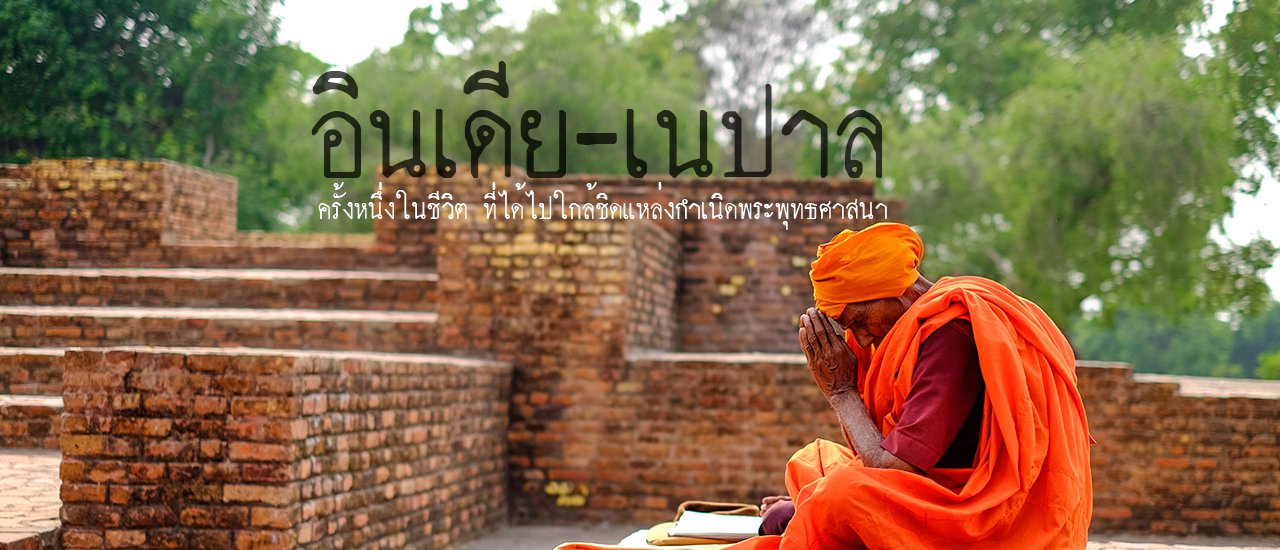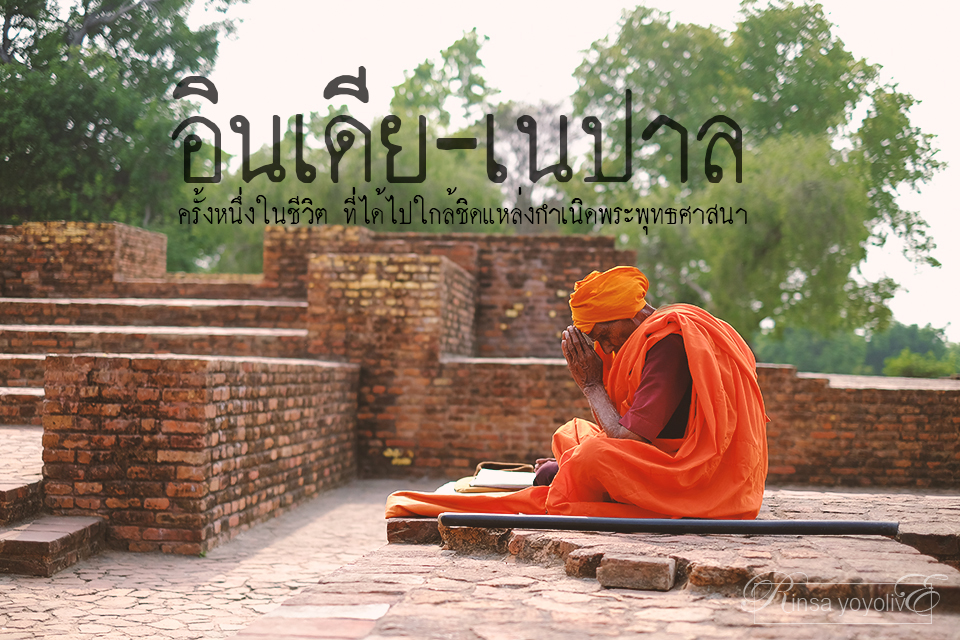
Would you like to visit India again? Our group chat invited us to visit India again.
After we just returned from India last March, this time we went to Jaipur.
But this time, we were invited to Lucknow by Thai Smile Airways as usual.
Let's go! We still have plenty of Indian visas left, so we immediately accepted!
Our destination this time is to visit the Buddhist pilgrimage sites.
At first, we didn't know what it was, but we roughly knew in simple terms that we were going to see the ruins of bricks.
Haaaaa, at that time, I thought to myself, why are we going to see the ruins of bricks? Is there anything for us to see?
I don't know if that was my rebellious thought because I had never been there before. 555
But when I got to visit, saw it with my own eyes, and learned more about the history and stories of those Buddhist pilgrimage sites from the monks,
It changed my mind!!
The change in my mind is not that I have come to like the ruins of bricks, but how has it changed?
Please follow along with us.
Once in a lifetime, I got to be close to the birthplace of Buddhism (India-Nepal trip).
![]()
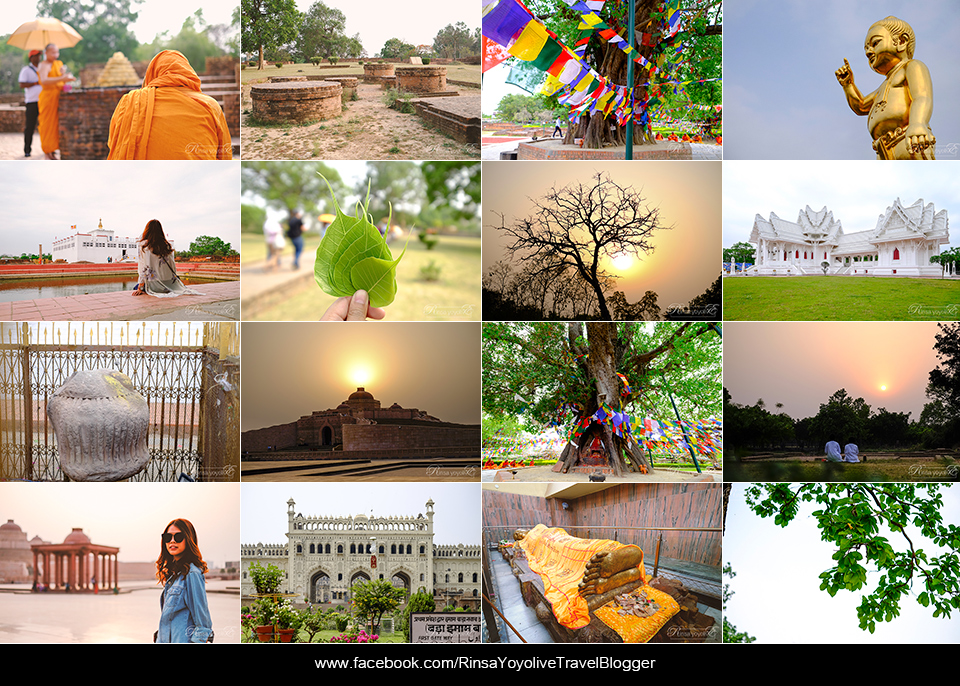
This is a two-part review of my trip to India and Nepal.
The first part will cover my visit to the 2 Sangha and 1 Savatthi.
The second part will showcase the magnificent architecture of Lucknow.
My trip took place from April 18-23, 2017.
I flew with Thai Smile, which recently launched a direct flight to Lucknow on December 1, 2016.
Currently, there are 4 direct flights per week from Suvarnabhumi Airport.
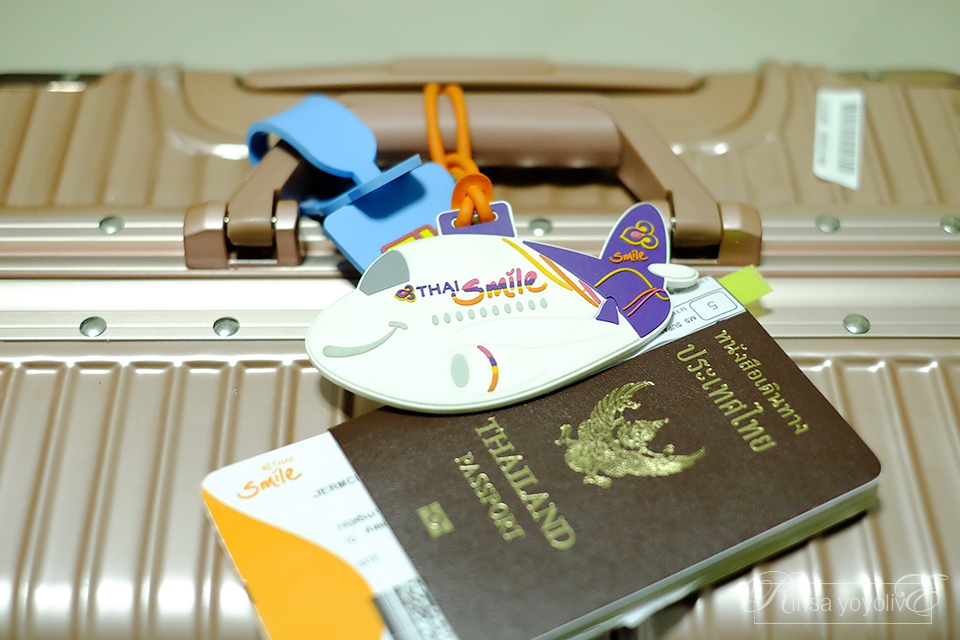
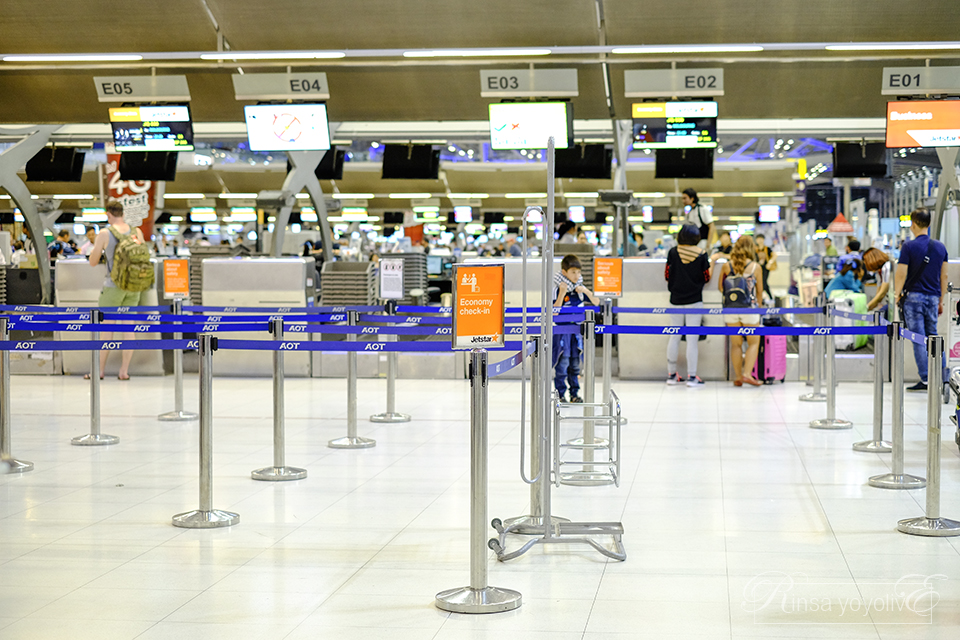
With leftover rupees from my previous trip to India, I was ready to embark on another adventure. The airport wouldn't exchange them, so I held onto them until this trip. Thankfully, I was able to use them all up and even brought some back to Thailand.
After clearing customs at Suvarnabhumi Airport, we boarded a flight to Lucknow, departing at 10:00 PM. The flight lasted 3.30 hours, and we enjoyed a meal before settling in for a restful sleep on the plane.
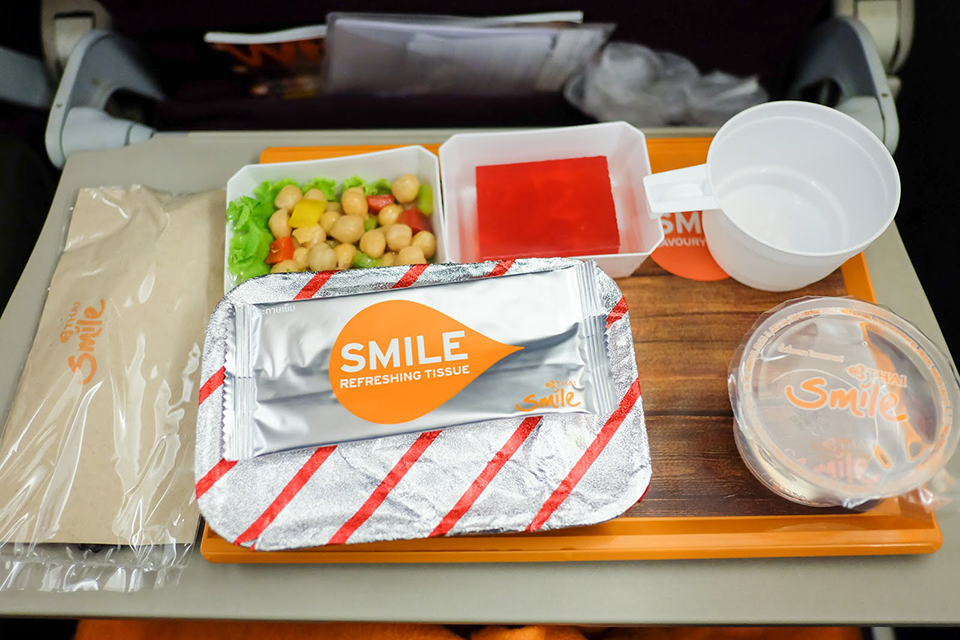
Upon arrival in Lucknow, I realized the airport had inconsistent air conditioning and dim lighting.
It resembled smaller airports in Thailand, like Trang and Nakhon Si Thammarat.
It was past 1 am in Lucknow, which is almost 4 am in Thailand, as there is a 1.30-hour time difference.
Feeling drowsy, we were transported by a minibus to our 5-star hotel for the first night, the "RENAISSANCE HOTEL".
Time to rest before continuing our journey tomorrow!
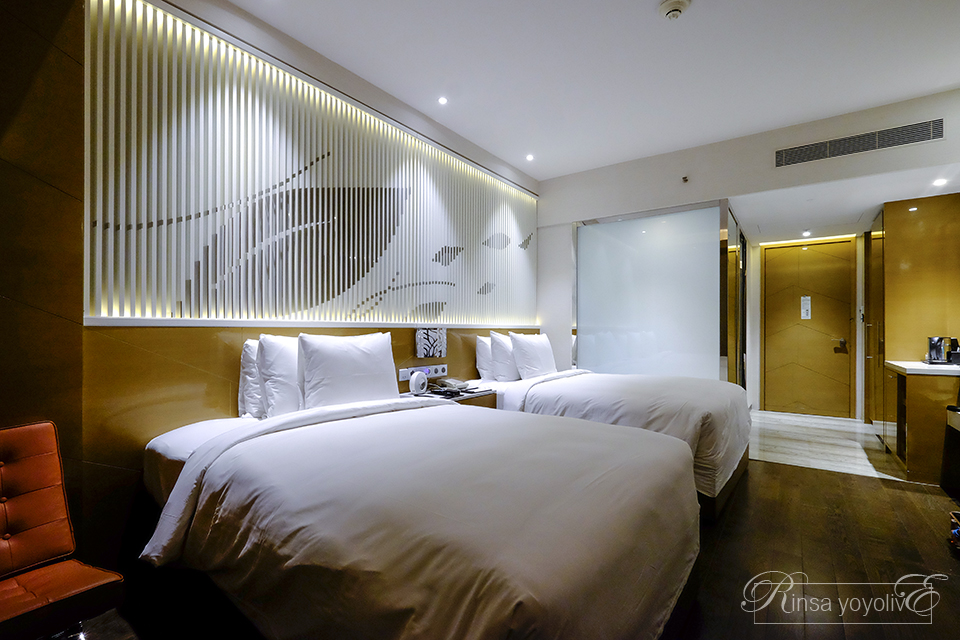
The first night was quite chaotic. When we entered the room, we were surprised to find a completely transparent glass wall in the bathroom.
We couldn't find any curtains to cover the glass, and we were supposed to share the room with another member of our group. We were tired and there were no curtains.
I said that I would probably have to ask for another room, but when our group member called the hotel, he walked into the bathroom and pressed a switch. The glass, which had been completely transparent,
instantly turned opaque. 555 It was a technology that we had never seen before, even though we have stayed in many hotels.
But we saw it in India on our first night here. It was quite extraordinary.
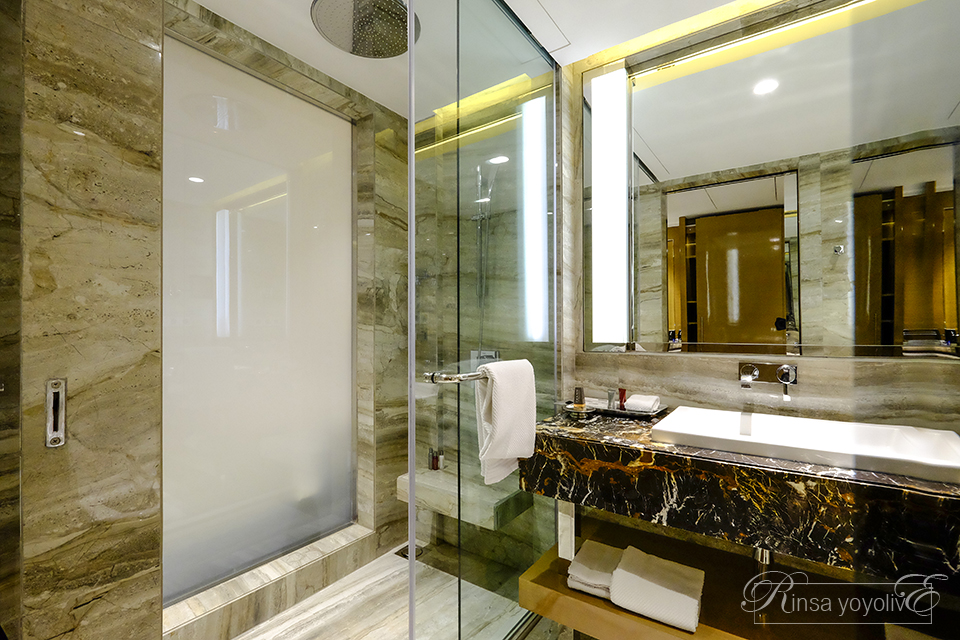
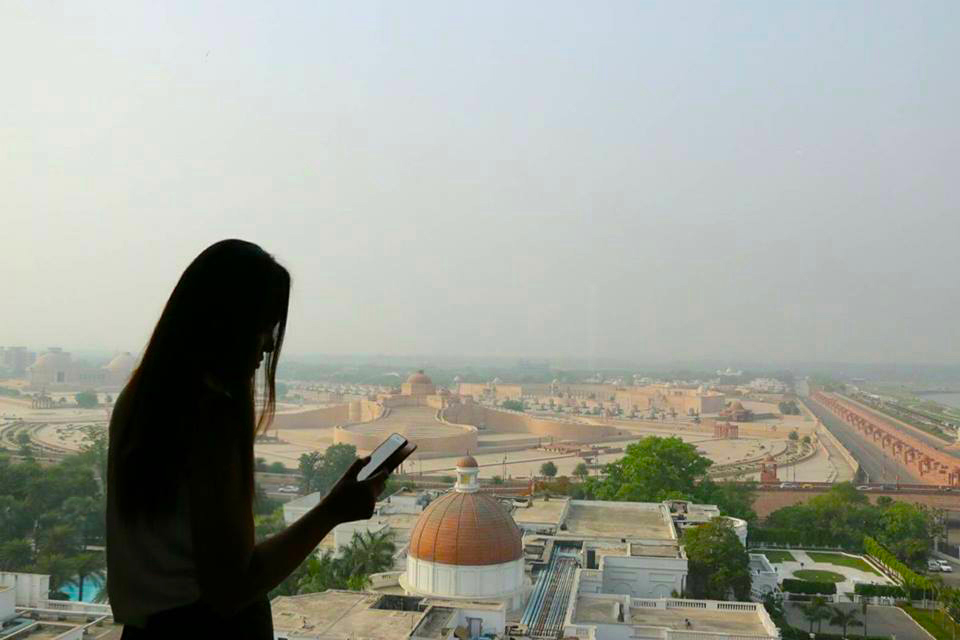
The Renaissance Hotel boasts stunning views of Ambedkar Memorial Park, a magnificent tribute to Ambedkar, a pivotal figure in India's intellectual transformation.
We will delve deeper into this landmark in the second part of our journey.
For now, let's unpack our bags and settle into our luxurious accommodations. After a restful night, we'll indulge in a delightful breakfast before checking out.
Fortunately, the hotel offers a diverse selection of international cuisine, catering to our palates and sparing us from the monotony of Indian food.
Our first day's itinerary is extensive, involving a lengthy car journey of 180 kilometers.
Despite the distance, the journey will take a remarkable four hours.
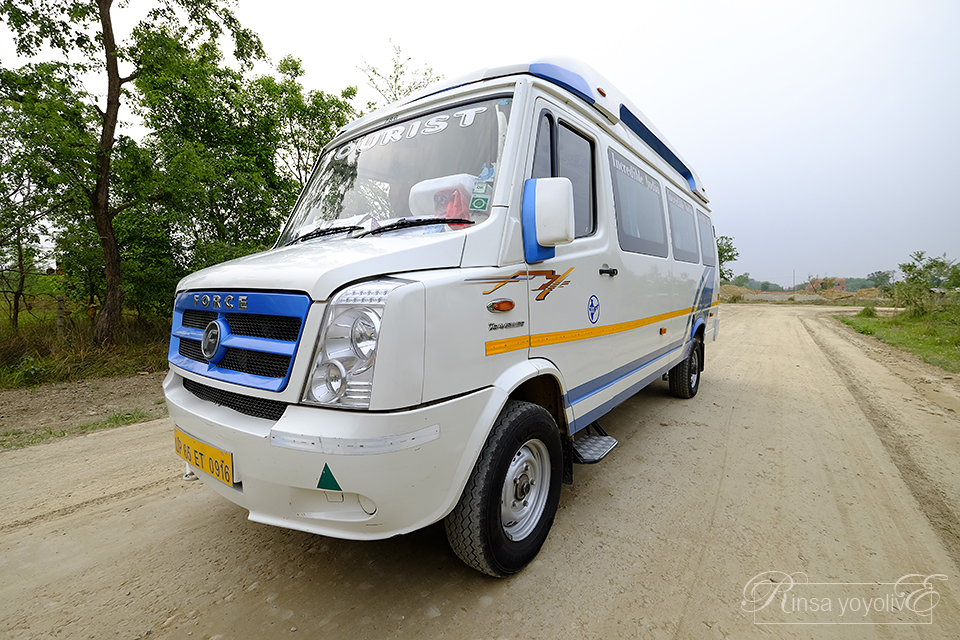
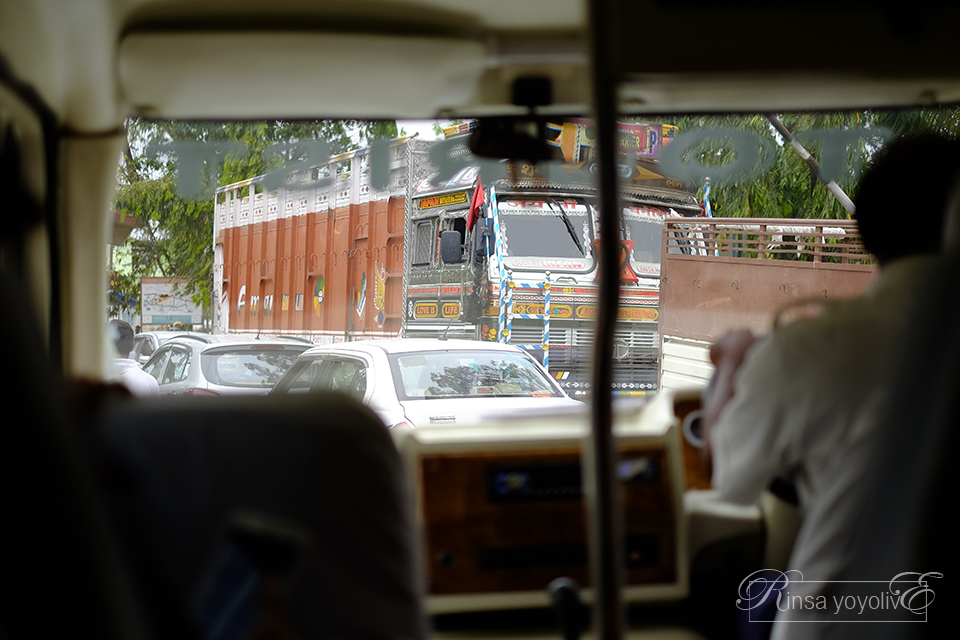
The roads are not beautiful or good, but there are some views and glimpses of local life.
The driving style in India is "follow your own rules, not mine." Traffic is quite bad.
Horns blare from all directions, and lanes are non-existent or constantly changing.
While dozing on the bus, you also have to worry about the driver's concentration. Haha.
The group checked into a hotel in Sravasti, had lunch, and rested for a while.
Then they went to pick up Venerable Kamsorn, the abbot of the Thai Chetawan Mahawihan Temple.
To visit the Chetawan Mahawihan Temple, or Sahet,
The royal monastery of the Buddha.
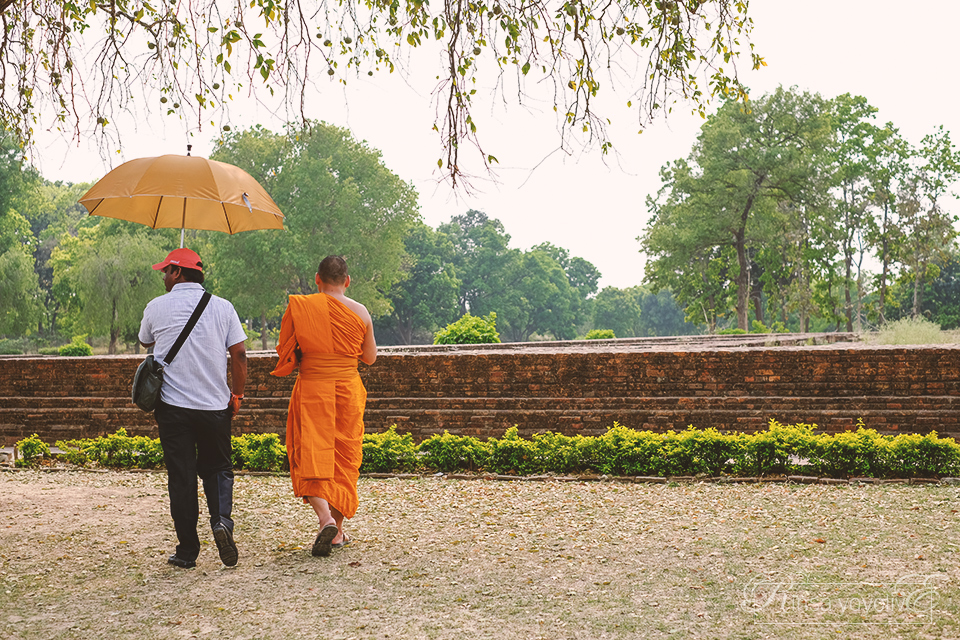
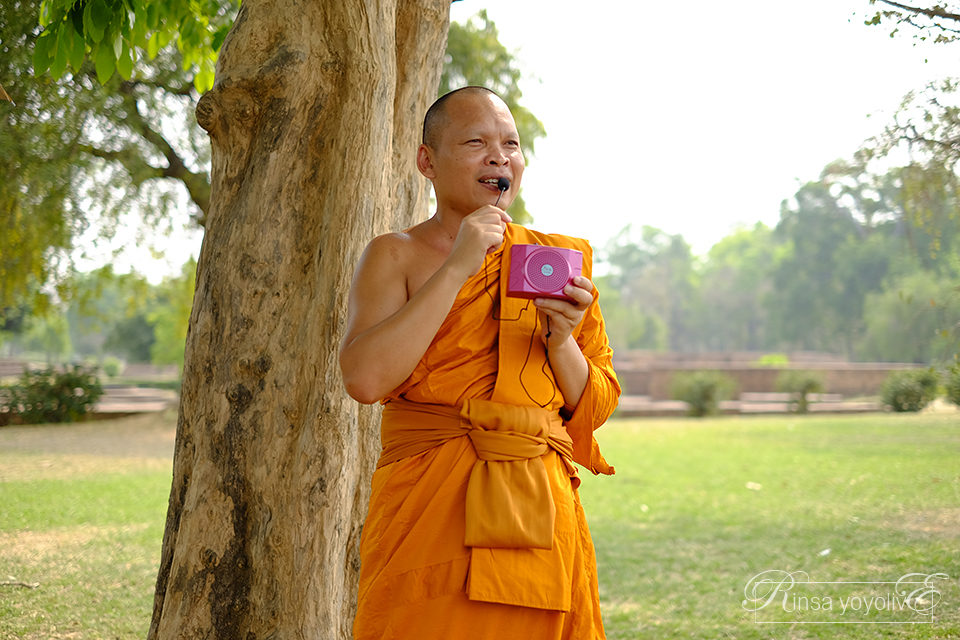
Throughout this trip, our group was accompanied by Venerable Phra Ajahn Komsorn (who has been living in India for approximately 20 years) to provide us with insights into the life of the Buddha.
At every pilgrimage site we visited, he shared stories and expanded upon the knowledge we had previously gained from our Buddhist studies textbooks.
It would be beneficial to record these new insights in video format, as the information we receive tends to fade quickly from memory.
![]()
The sentence is already in English and does not require translation.
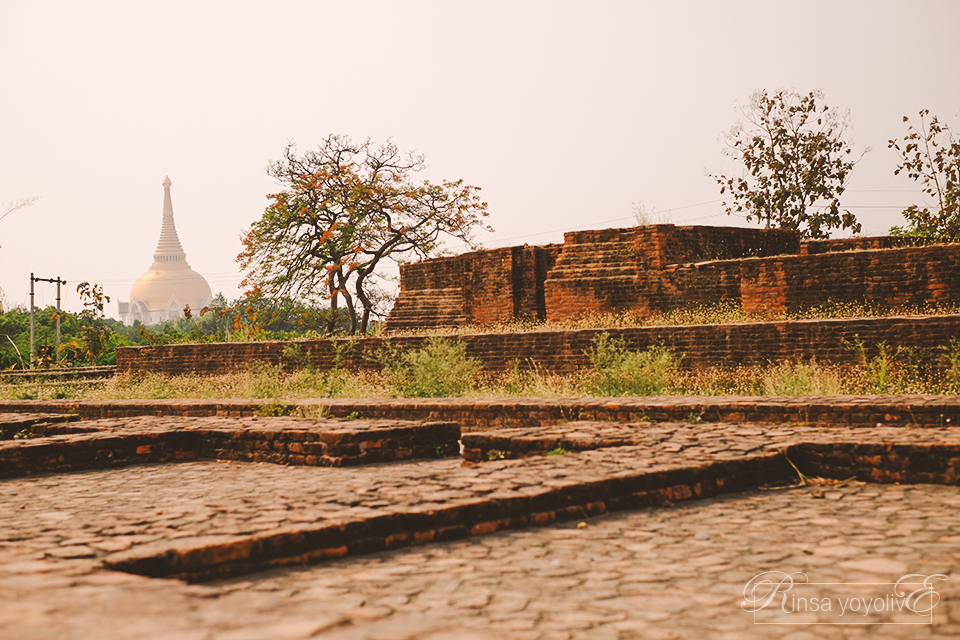
The Jetavana Monastery, also known as Sahet, is a royal monastery of the Buddha in the city of Savatthi. It is another temple of great importance to Buddhism.
It is the temple where the Buddha spent 19 rainy seasons. The area in front of the temple is believed to be the place where Devadatta was swallowed by the earth.
Inside the ruins of these bricks, you can see traces of different rooms, each at a different level.
If you close your eyes, you can imagine the great prosperity of that time.
Today, the Jetavana Monastery is only a ruin, but it has been well restored by the Indian government.
Everything you see in these pictures has been restored, leaving only traces.
But we vaguely remember that there was a time when a teacher told us that a wealthy man donated a huge amount of money to build this temple.
He brought gold in a cart to offer it. And that wealthy man was Anathapindika, the great wealthy man of Savatthi.

Is there anything else I can help you with?
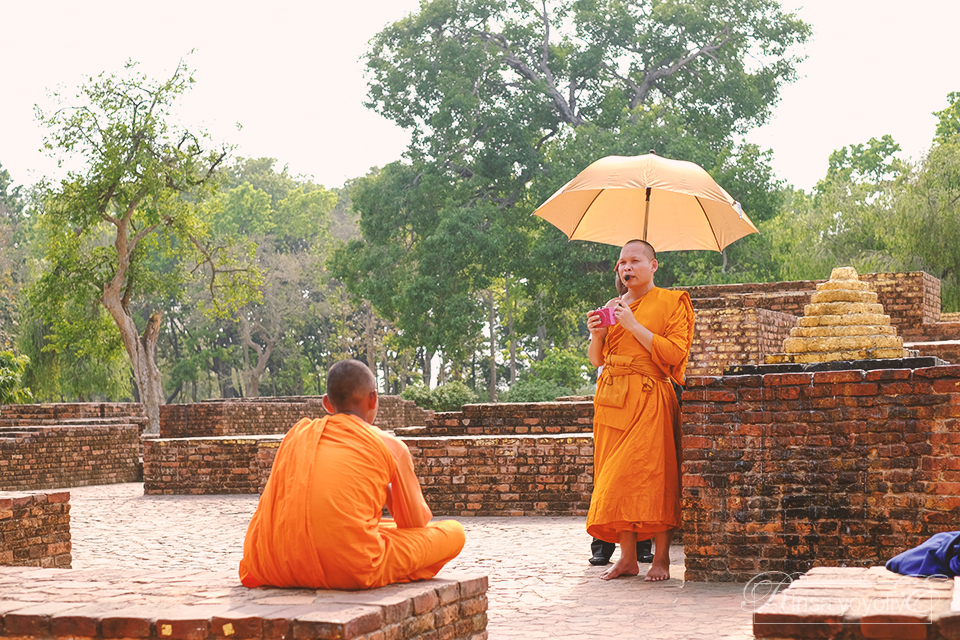
The golden platform seen near Venerable Kamsorn is the Mulagandhakuti Vihara, located within the Jetavana Monastery. This was the Buddha's residence, which has been meticulously excavated and landscaped.
Throughout the day, numerous monks can be observed visiting the site to recite prayers or conduct ceremonies, even during the scorching heat exceeding 36 degrees Celsius on that particular day.
The Jetavana Monastery also houses the "Ananda Bodhi" tree, planted by Venerable Ananda during the Buddha's time. This renowned Bodhi tree is frequently mentioned by pilgrims and is a popular request among Thai visitors, who desire to take home a leaf as a memento.
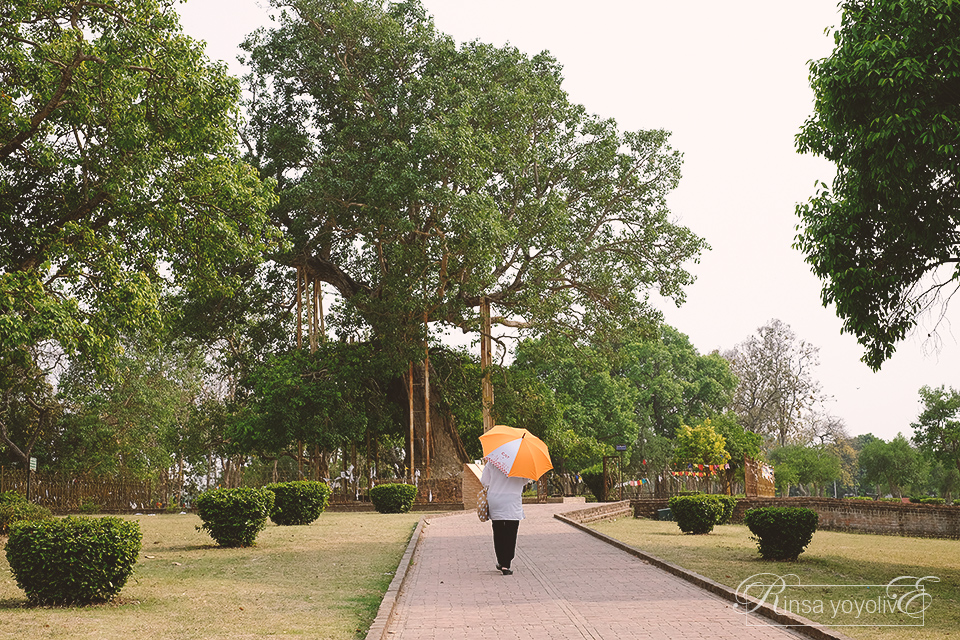
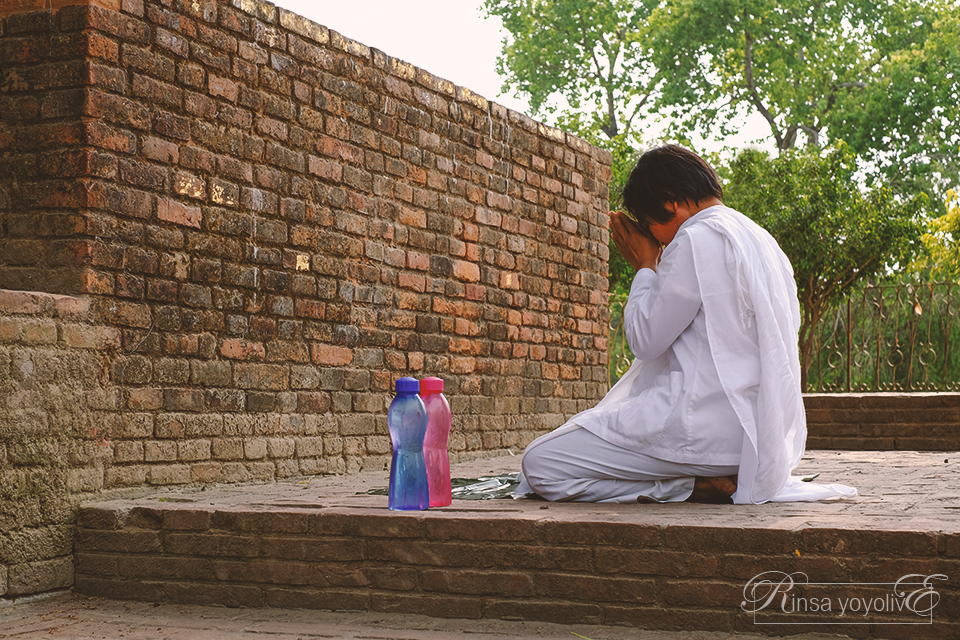
Upon entering the area within the Bodhi tree, there is a fence surrounding it. There are also supporting pillars for the Bodhi tree as it is 2500 years old!!
During the time of the Buddha, Venerable Ananda brought seeds from the sacred Bodhi tree under which the Buddha attained enlightenment.
We saw pilgrims meditating under this Bodhi tree, so we sat down too, hoping to find some peace.
However, after a while, more and more pilgrims came to sit around the Bodhi tree, so we decided to get up. 555
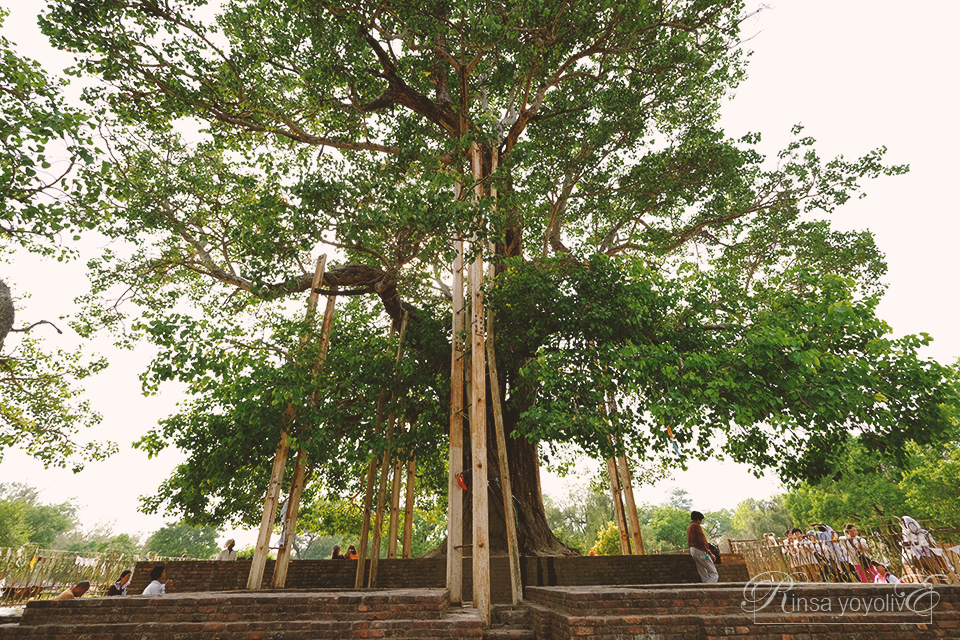
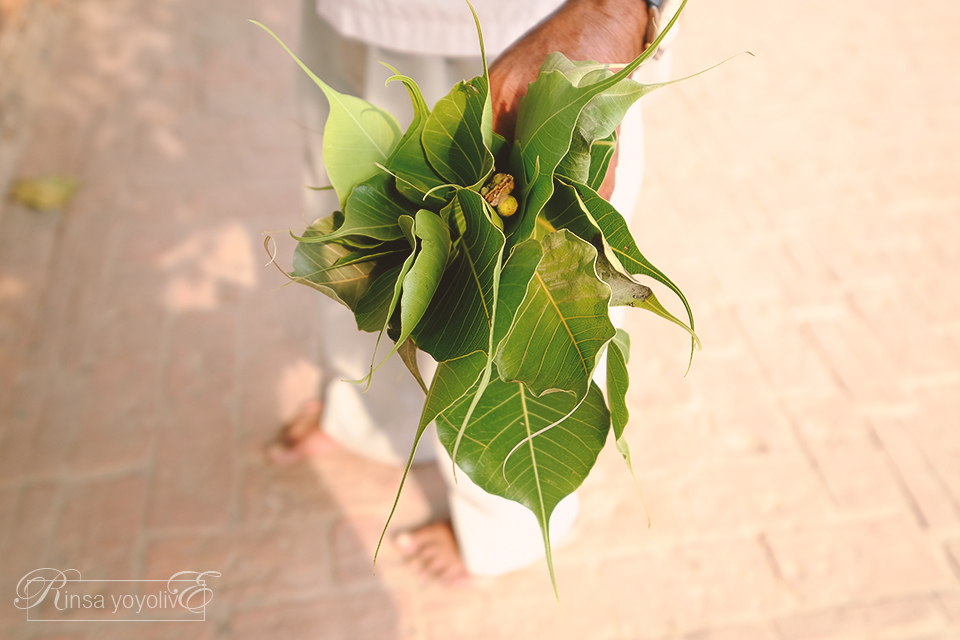
Under the Bodhi tree, we waited for a miracle, for the Bodhi leaves to fall. At that time, an Indian man came to us with a handful of Bodhi leaves.
He said, "One dollar!" We waved our hands and shook our heads.
Some people also came with a handful of rupees, asking us to exchange them for dollars.
We refused all offers, but we ended up with some Bodhi leaves in our hands.
We didn't pay for them, and we didn't pick them up from the fallen leaves.
An Indian man dressed in white handed them to us and walked away.
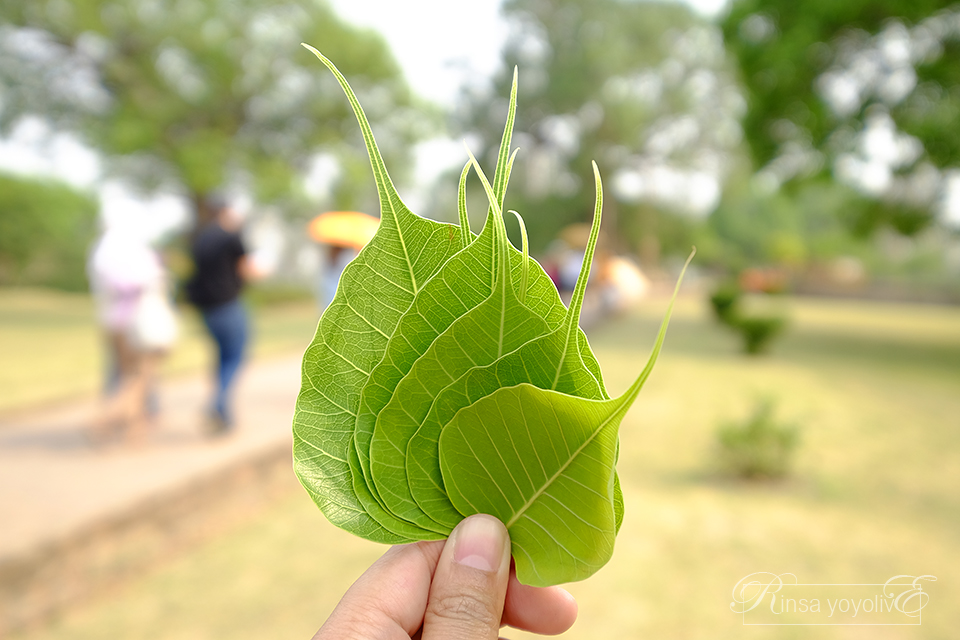
"Thank you." We were so happy to bring back five Bo leaves from Thailand. We will share them with our friends and family so that they can also receive blessings.
Each person will receive one leaf to worship for good luck.
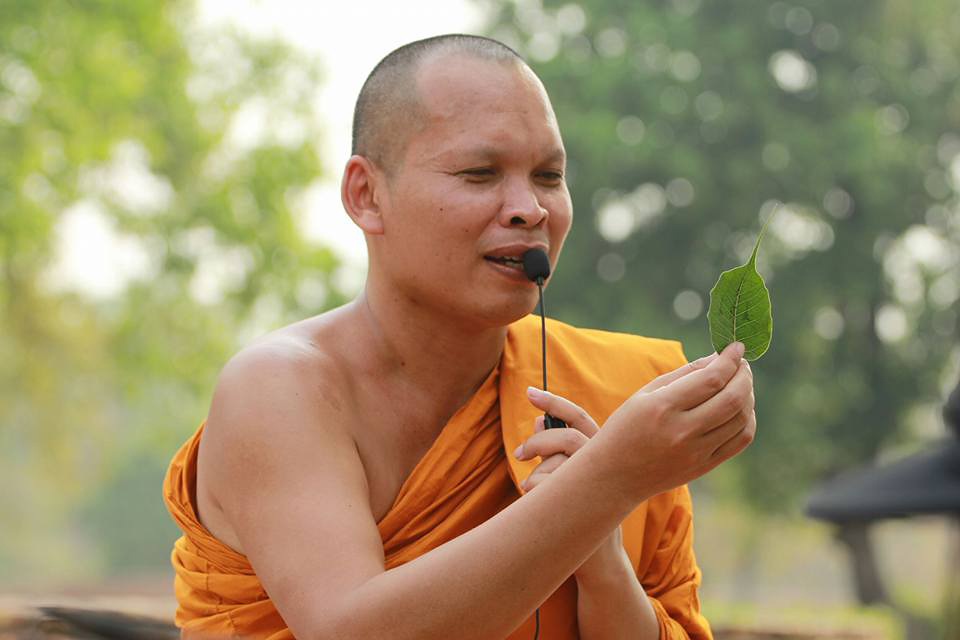
Venerable Kamsorn "inscribed" only one Bo leaf for our congregation.
The power of faith and belief is paramount, for it is under this very Bodhi tree that the Supreme Enlightenment of the Buddha took place. This sacred site, one of the four holy pilgrimage destinations, marks the culmination of the Buddha's journey.
His birth occurred in Lumbini, now located in Nepal, his enlightenment in Gaya, his first sermon in Sarnath, and his final liberation in Kushinagar.
As the evening descended, casting a gentle coolness upon the air, our group continued to explore the vast expanse of the Jetavana Monastery.
Monkeys, ubiquitous throughout the grounds, would occasionally appear, their watchful eyes demanding respect. Averted gazes were crucial, for any direct contact could provoke a fierce display of teeth. The resident monk recounted tales of tourists being thrown and dragged across the ground by these mischievous primates.

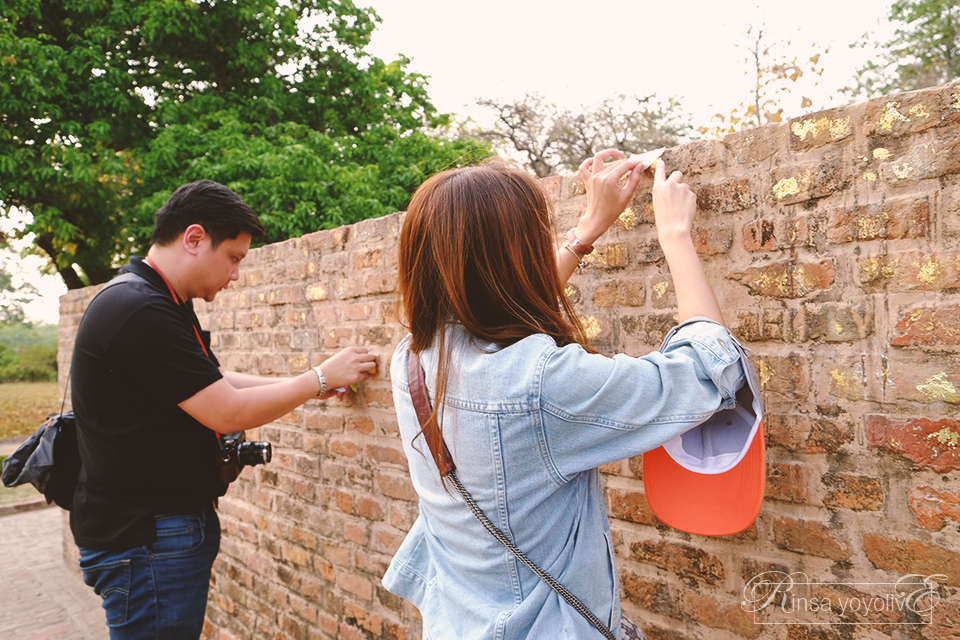
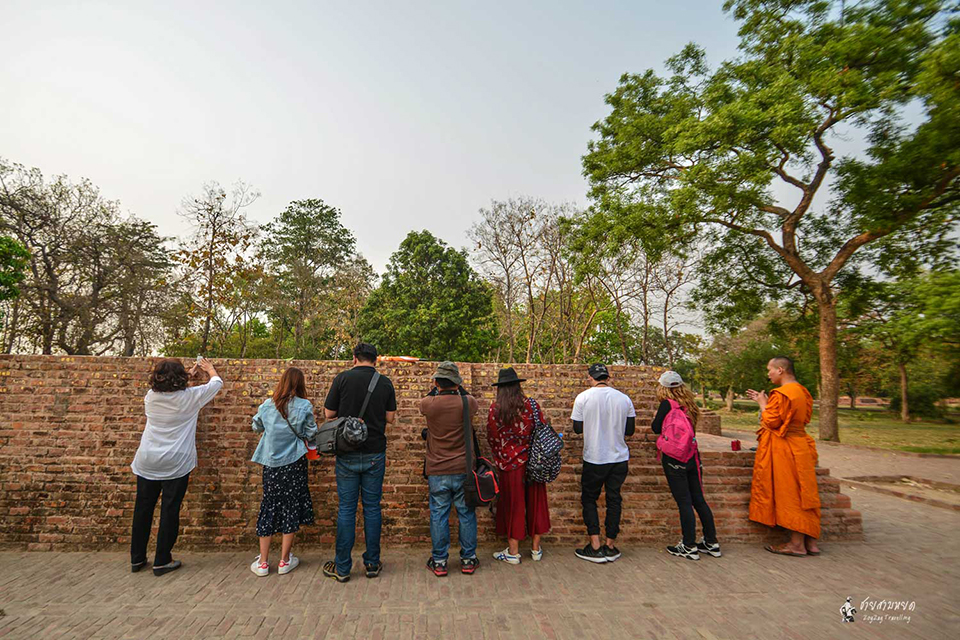
We came to apply gold leaf to the kuti of Phra Sariputta by writing the names of individuals on the paper backing the gold leaf and attaching it to the kuti.
Of course, the names we wrote this time will be the names of our beloved family and individuals in our lives.
The lower part here seems to be the kuti of Phra Moggallana and Angulimala, who were ordained as monks at Wat Chetawan here as well.
When I heard the Venerable Master tell the story of Angulimala, I was also entertained.
Because he was suffering from killing people and was afraid that he would not remember who he had killed.
He had to cut off his fingers and string them into a garland to hang around his neck until he reached enlightenment.
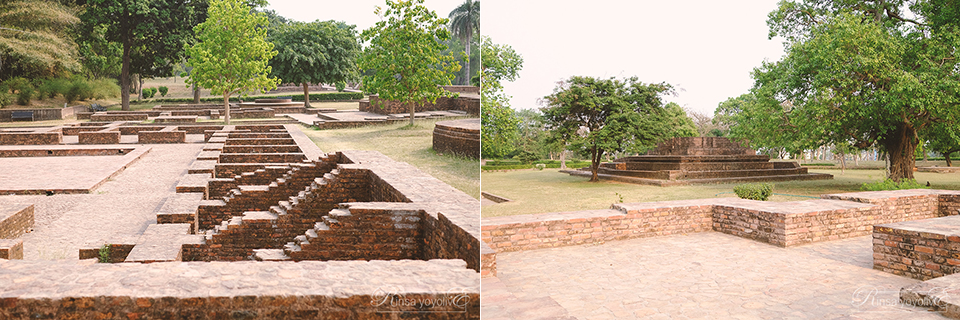
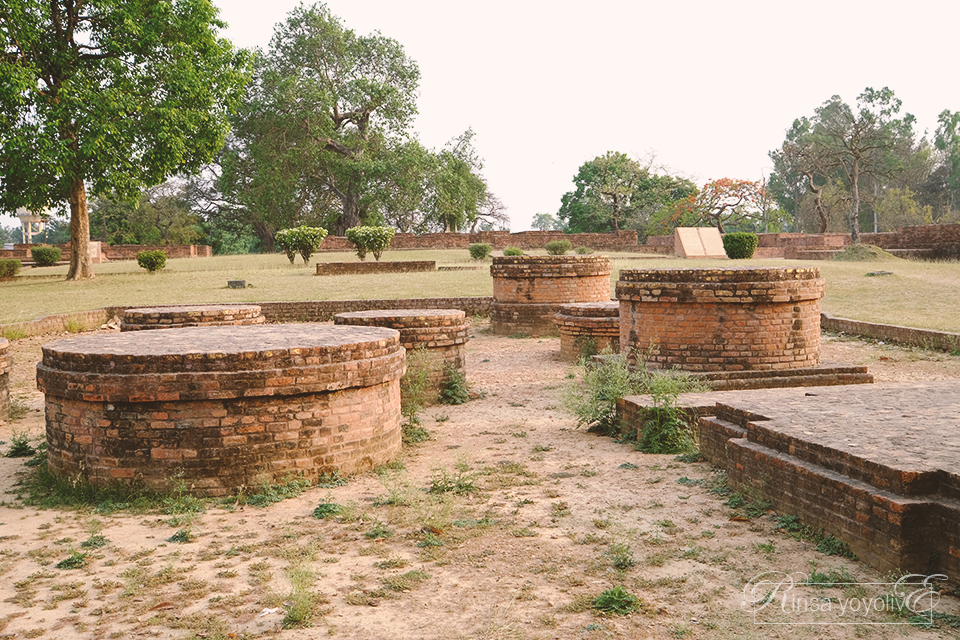
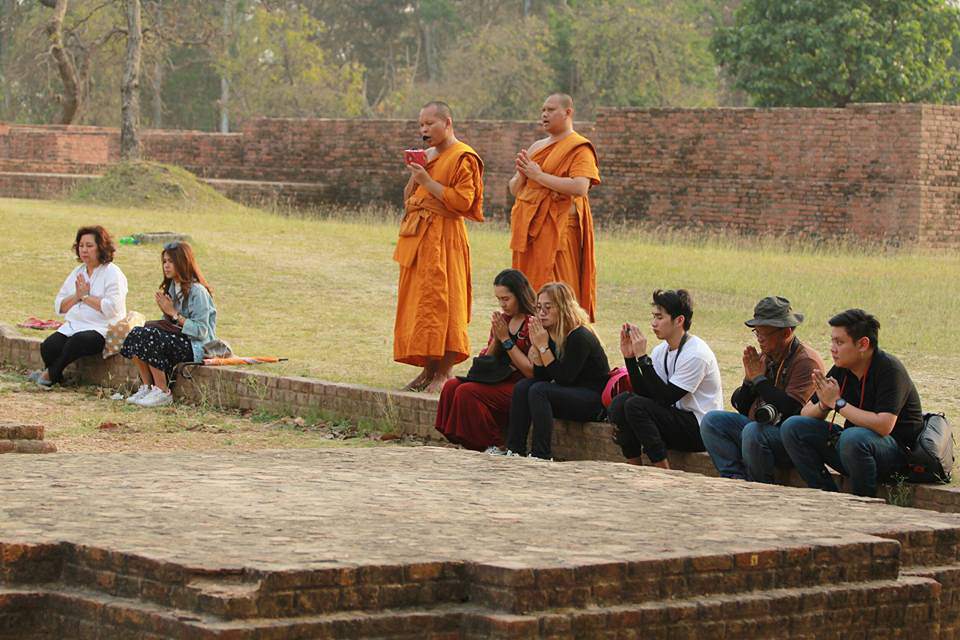
The group sat with hands clasped in prayer before the eight stupas of the Aṭaka, each representing an arahant from a different direction. The monks and their disciples joined in chanting together.
Despite the sweltering heat, everyone remained in good spirits. After all, throughout the entire trip to India, they had not seen a single day of blue sky.
The sky was always hazy, and the air was thick with humidity. However, they were grateful to at least witness the occasional sunset in the fading light.
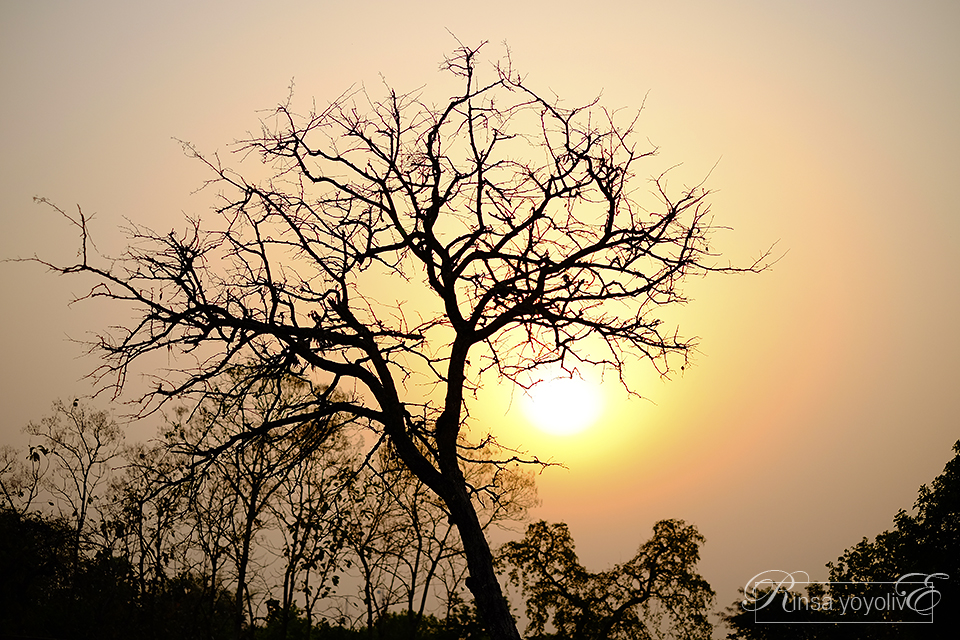
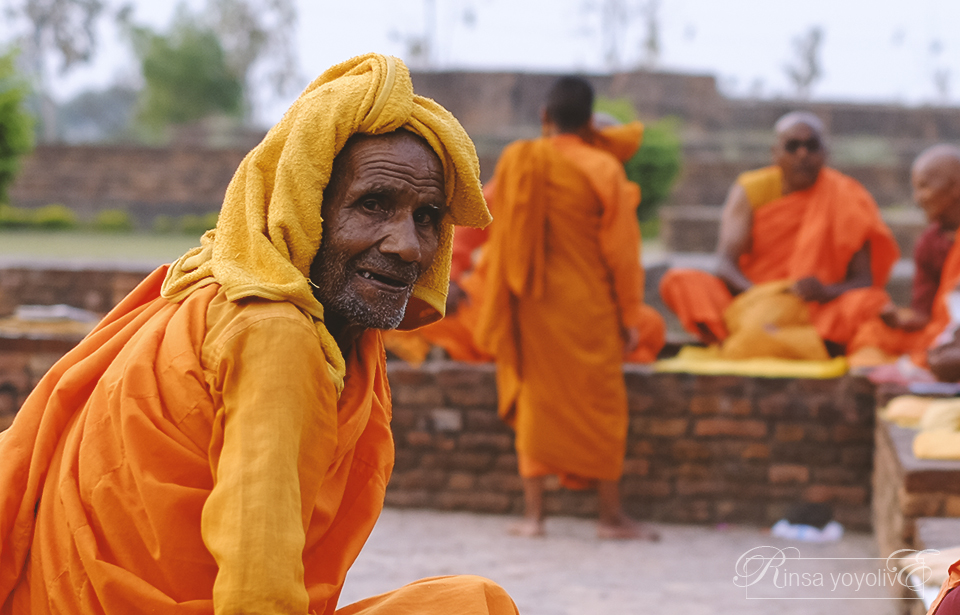
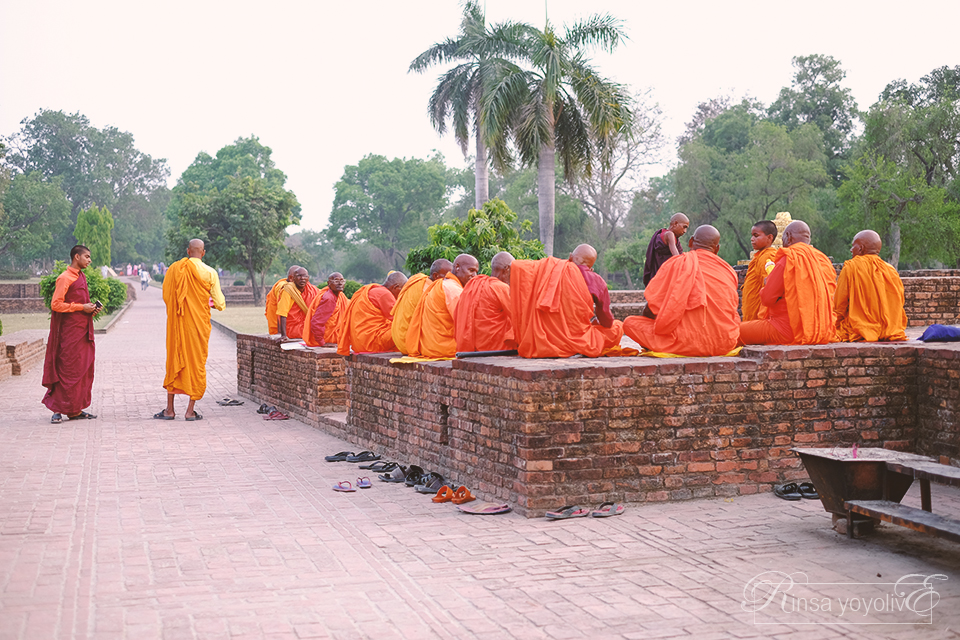
Before leaving Wat Chetawan Mahawihan, we walked past the Phra Mul Kanthakuti again.
This time, we saw more and more monks coming to make merit at this point.
It can be said that Phra Mul Kanthakuti is one of the most popular places to make merit.
Therefore, it can be concluded that the popular places to worship are Phra Mul Kanthakuti, which has been well excavated and renovated; Ananda Bodhi, the Bodhi tree planted by Ananda in the Buddha's time, this Bodhi tree is mentioned in the scriptures and still stands today; the group of kuti of the Maha Thera; and the bathing pool of the Buddha.

Amen.
On the way back to the car, we stopped to take some pictures of the roadside. We saw many fruit carts selling a wide variety of fruits. We were amazed by the Indian fruits, especially how they were being sold in the hot sun. Most of the fruits were large and fresh-looking.
During our previous visit to India, we were curious about this, but this time we decided to ask the vendors directly. We asked them why they weren't afraid of the fruits spoiling in the sun, and why the fruits were so sweet and large.
They explained that the fruits in India are grown naturally, using only manure as fertilizer. They don't have the money to buy chemical fertilizers like we do in our country. They also said that the fruits don't spoil easily in the sun, unlike fruits in our country that can't be left out in the sun for long. We realized that this was indeed true.
We have tasted many different Indian fruits, and they are all sweet and delicious, especially the pomegranates and cucumbers.
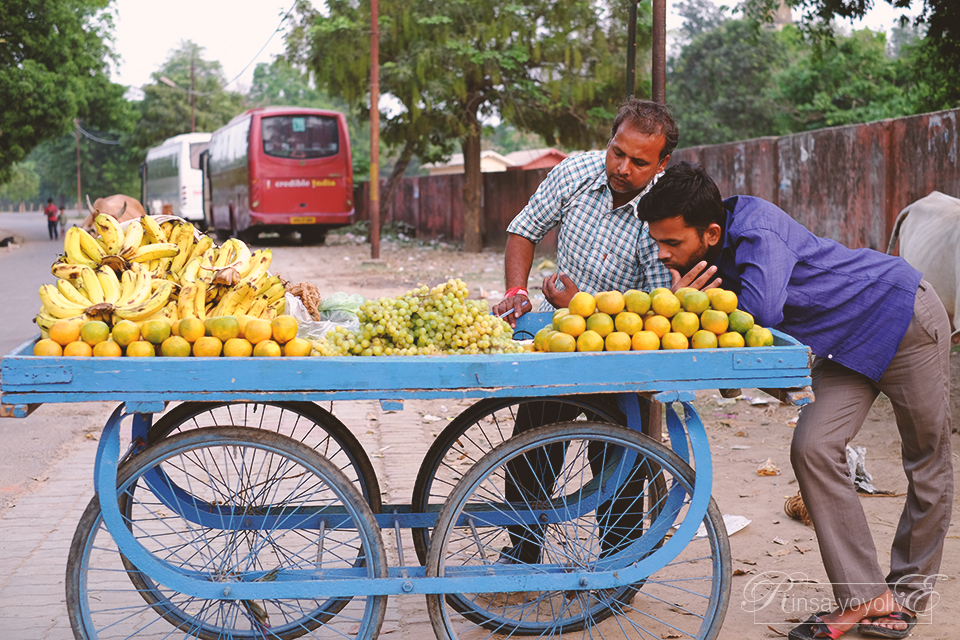
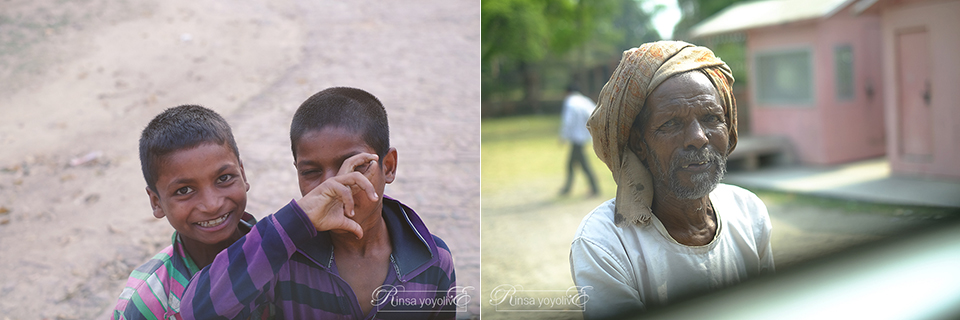
The familiar smiles still lined the roadside, but this time they seemed ordinary.
How about a picture? Hehe.
That evening, the light was still there, and the Venerable Master took us to the next stop: the house of "Anathapindika the Great."
The great millionaire of the city of Savatthi, who used his own money to buy the land to build the "Jetavana Monastery" to offer to the Buddha.
The first impression I had was that it was just a pile of brick ruins.
But the base was magnificent, very large, less than 5 kilometers from Wat Chetawan.
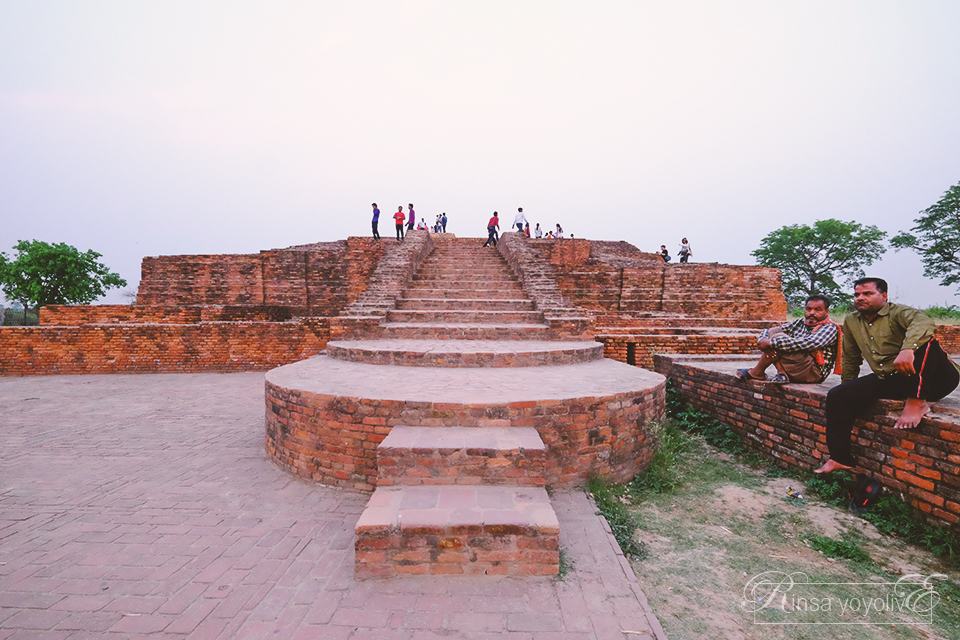
Judging by its exterior, this structure may not appear particularly grand. However, upon entering, one is met with a sight that defies initial impressions.
The image before us leaves much to the imagination. One wonders why such a deep pit was constructed, visible from the base above.
Was it intended for the storage of treasures? It is impossible to say for certain. However, it is evident that restoration work has been carried out.
Similar to Wat Chetawan, the surrounding area is quite extensive.
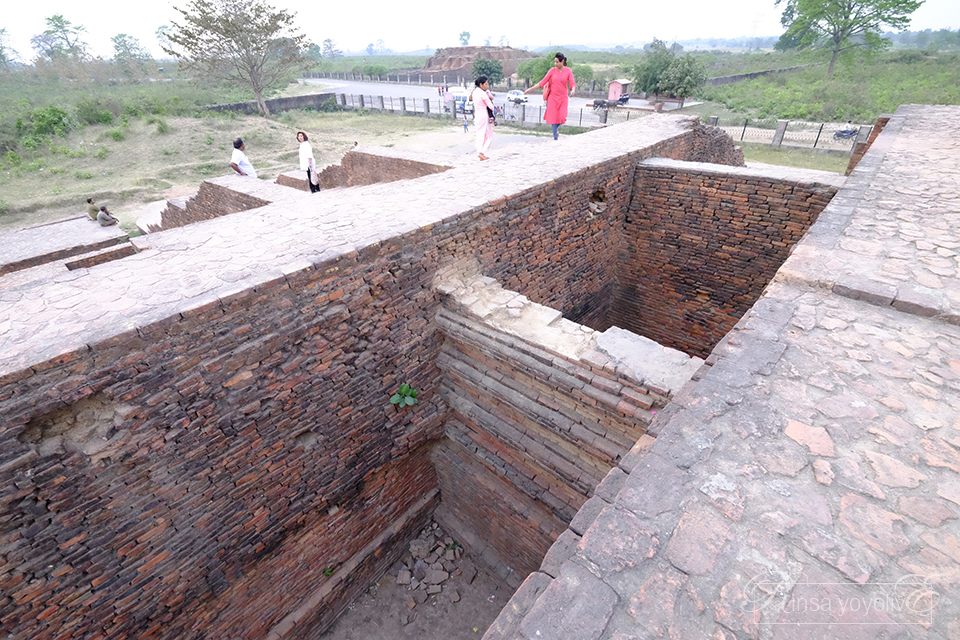
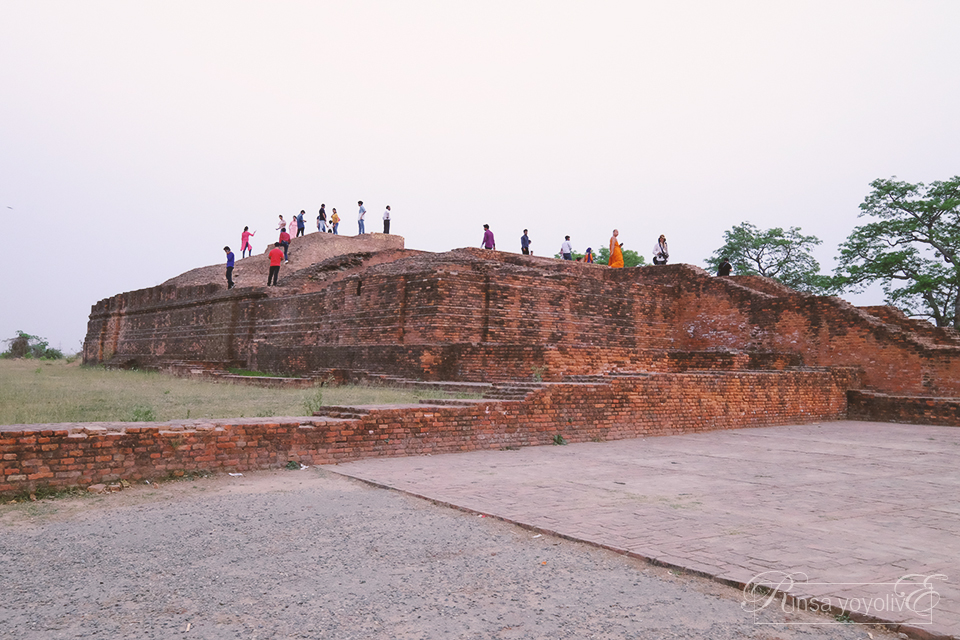
Upon arriving at the home of Anathapindika, the venerable teacher recited another verse. He instructed the group to open their wallets or bags while he chanted. However, I had not brought any bags with me. I had left them all in the car. The only thing I had was a lens case, which could be considered a bag or pouch. So, I opened it, hoping to receive some wealth.
![]()
Day 2. We continued our pilgrimage to Lumbini Grove in Nepal and checked out of our hotel in Sravasti.
We met early at 7 am to avoid wasting time.
It took about 5 hours to cross the border, which was very long and tiring. At least I was able to get some more sleep.
However, I couldn't help but notice the large number of trucks parked on the side of the road while crossing the border into Nepal.
The teacher said that some of them have been parked there for weeks, reducing the two-lane road to a single lane.
Therefore, those who are planning to make a pilgrimage with a pure heart must also be patient with the long journey.
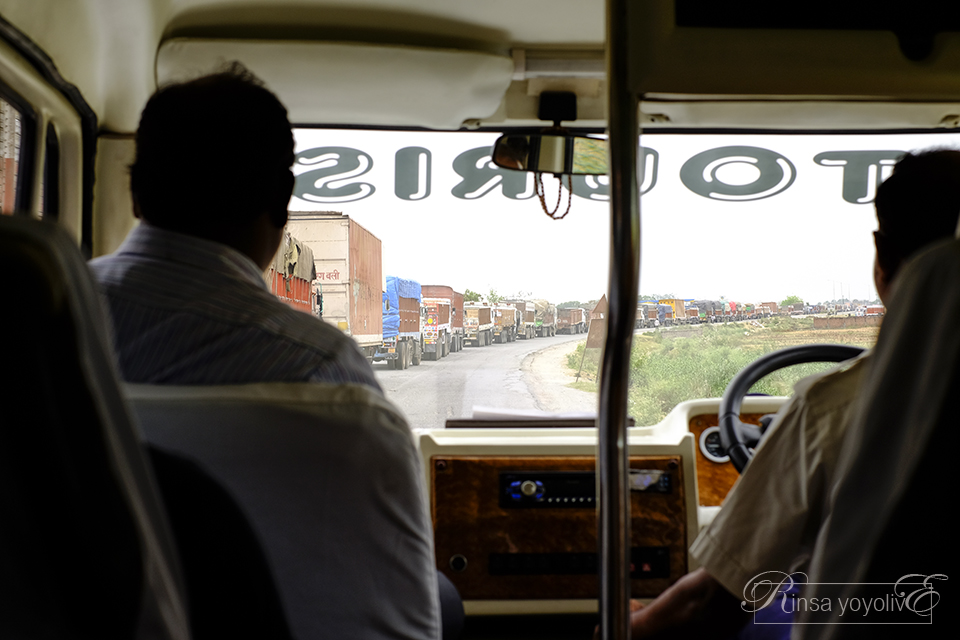
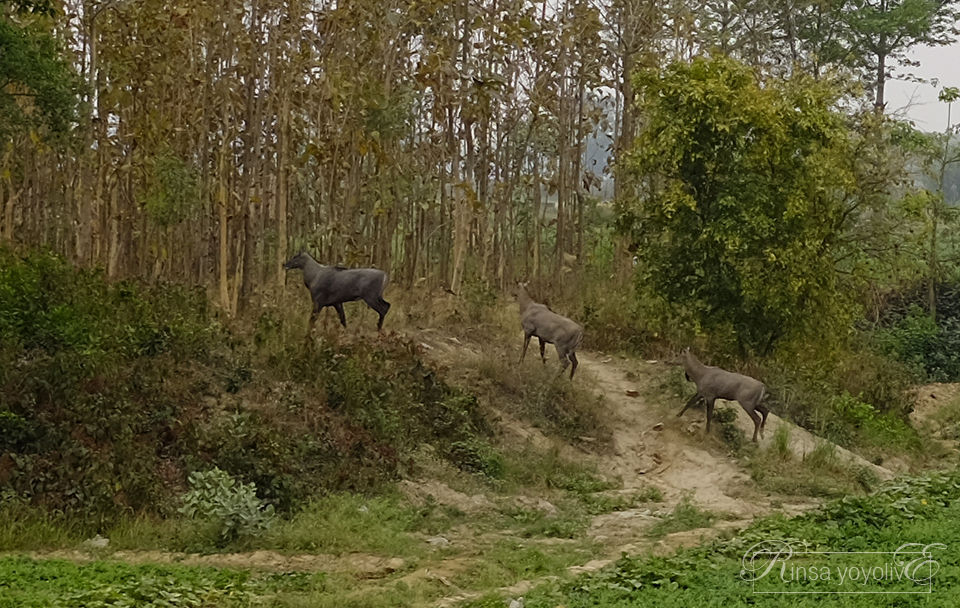
On the way to Lumbini, Nepal, a nilgai (Boselaphus tragocamelus), a bovine mammal resembling a cow with a horse-like body, a deer-like face, and a goat-like chin, suddenly ran out from the side of the road and crossed in front of us.
Venerable Kham Sorn, with his sharp eyesight, quickly alerted us to wake up and stop the car while we were dozing off in the vehicle.
He informed us that seeing a nilgai is considered auspicious.
This is because nilgais are constantly on the move and rarely appear before humans.
Capturing even a single image of this elusive creature required multiple attempts, as we did not have a zoom lens with us. Today, we were fortunate enough to witness it with our own eyes.
During our journey, we stopped for a break at a Thai temple located at the border of India and Nepal.
The sight of the Thai flag fluttering at the entrance of Wat Siddhattha Rajamanthiri 960 filled our hearts with warmth.
This temple, built by Thai devotees, offers refreshments such as snacks and soft drinks. The temple appears to be relatively new, judging by the building materials used and the recently planted trees.
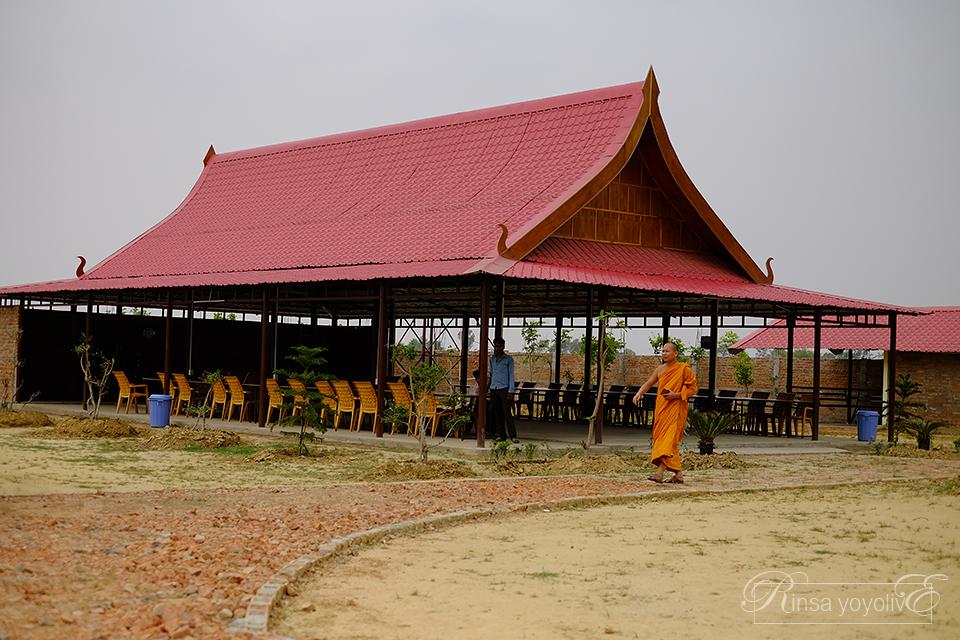
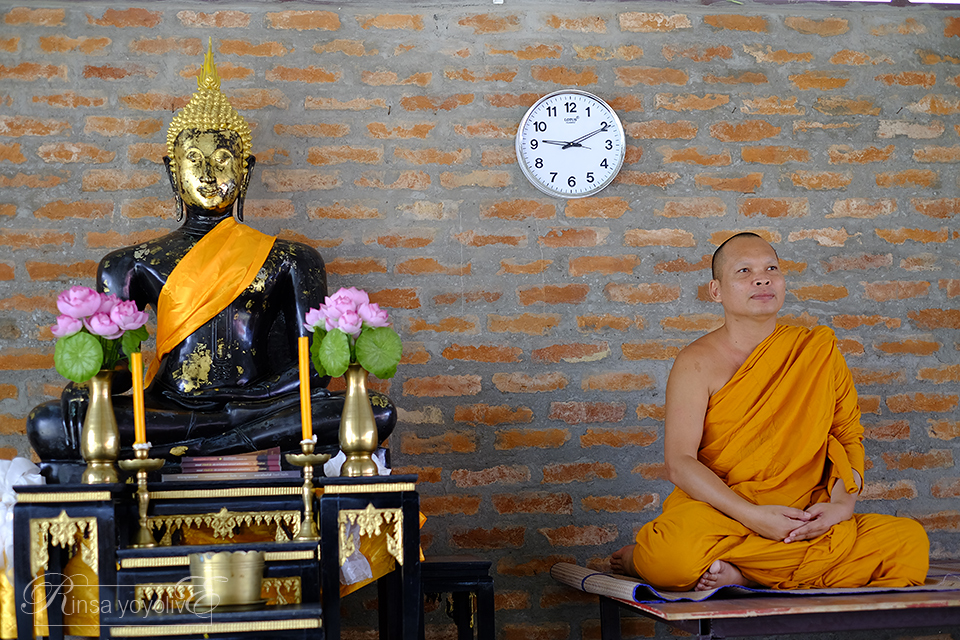
The sentence is already in English and does not require translation.
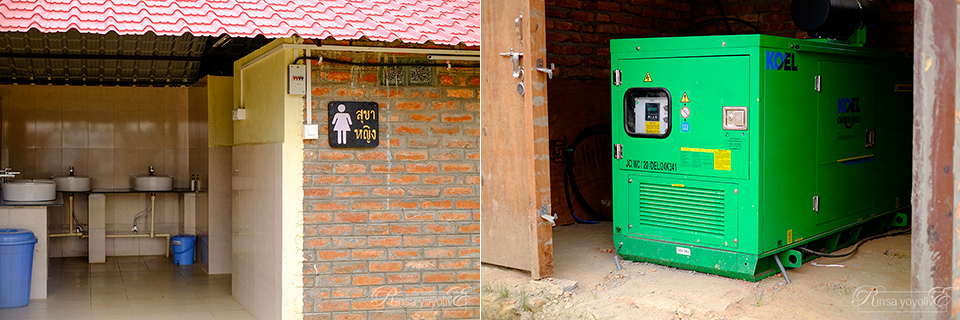
The temple has separate male and female toilets with flush toilets and bidets, which are kept clean. I was amazed by the faith of the Thai people who donated a large generator to this temple. The power of faith in Buddhism among Thai people is truly extraordinary.
After leaving the temple, our group visited another Thai temple called Wat Thai Navaracha Ratnaram 960.
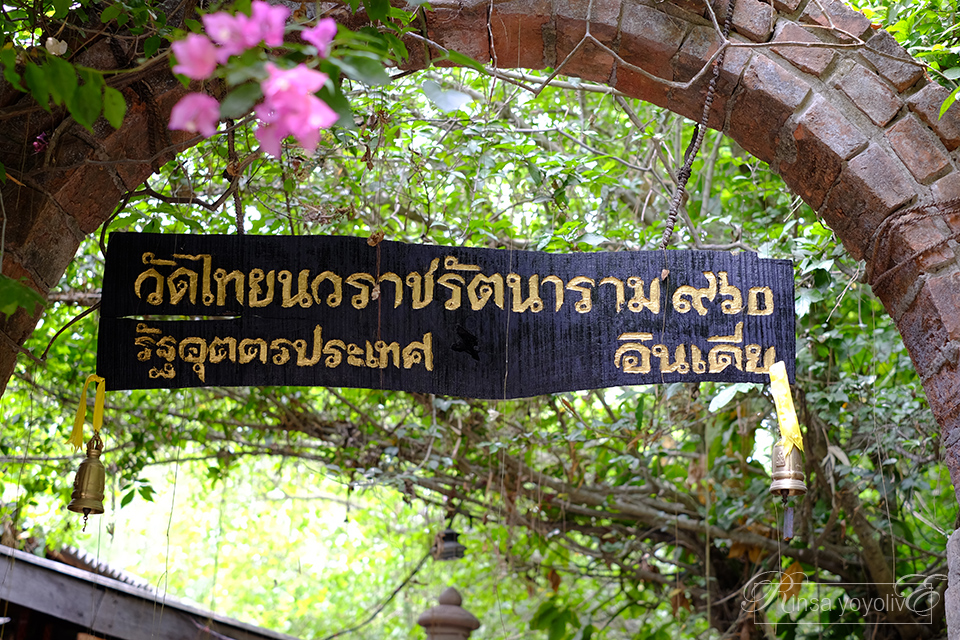
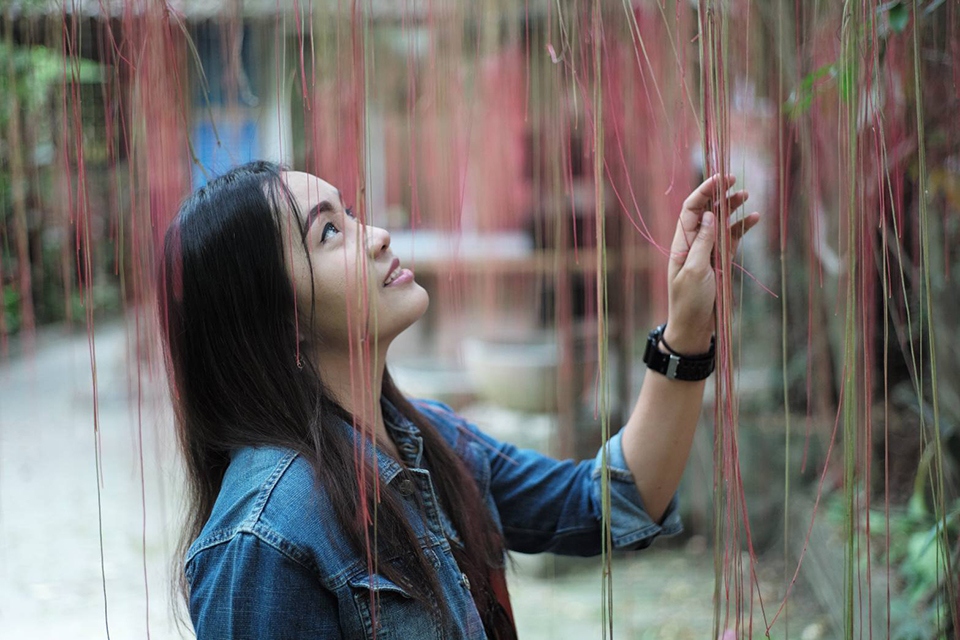
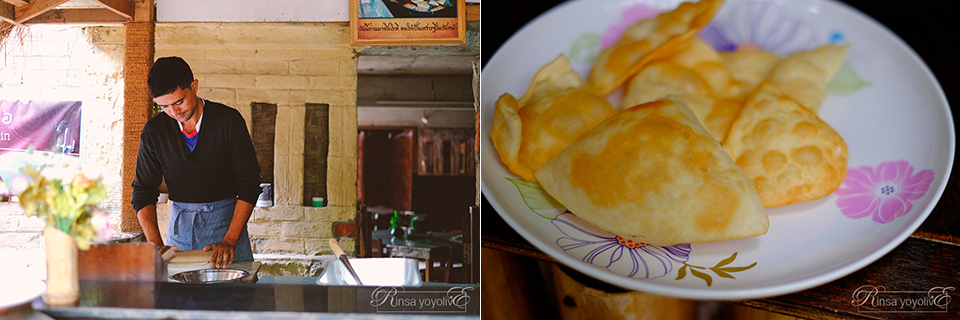
We stopped by for roti with milk. It's delicious, just like the Bear Brand milk we have in Thailand. 555
This temple has many clean rooms and bathrooms for Thai pilgrims to stay in. There is also a free dining room.
Every year, many pilgrims come here, mostly during the cool season and important Buddhist holidays.
Now we're heading to Nepal.
The border between India and Nepal looks similar to the Mae Sai checkpoint in our country.
I saw a big watermelon. The monkeys are eating it too, don't you think? 555
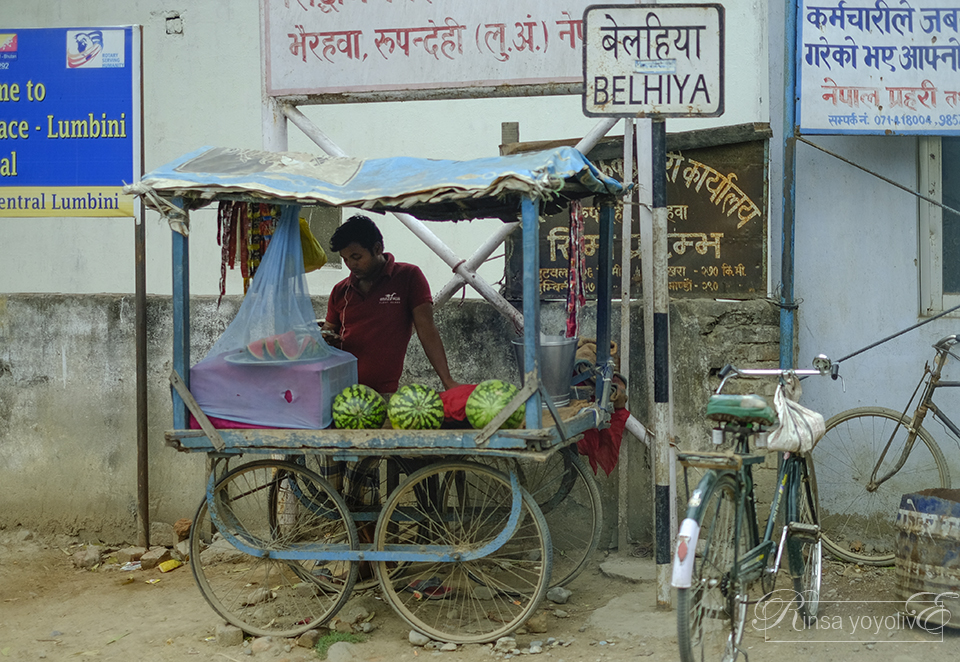
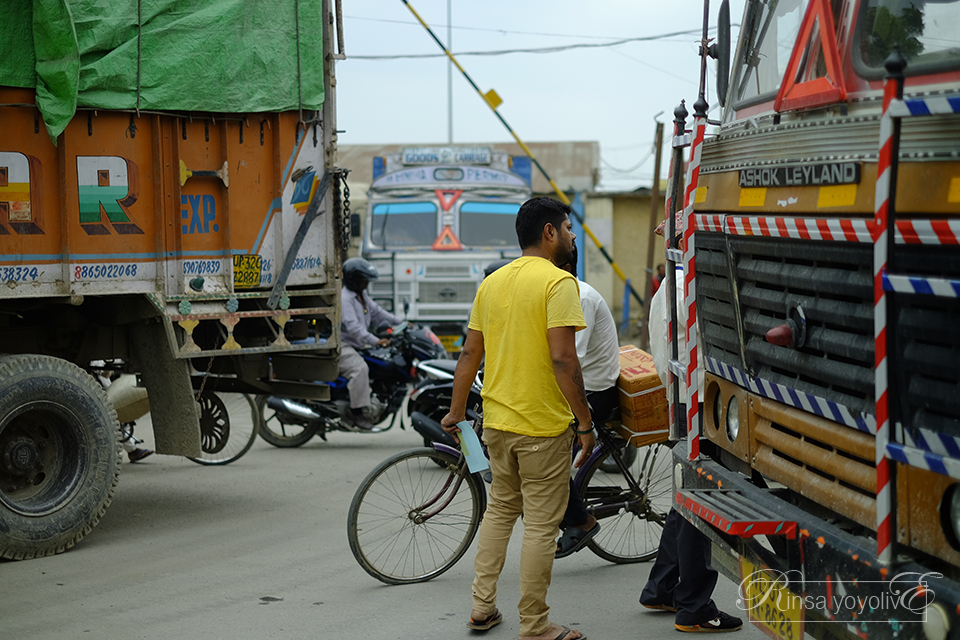
The roads were constantly congested, not due to traffic jams, but rather due to the chaotic driving habits of the locals. Every vehicle bore some form of damage, yet we witnessed a minor collision where the drivers simply inspected the damage and drove away without exchanging information.
Intrigued, we inquired about this behavior from a local monk, who explained that the people here prioritize their destination over minor inconveniences. They are willing to overlook minor incidents to avoid delays.
This approach, while admirable in its efficiency, stands in stark contrast to our own society, where even the slightest scratch or dent can lead to heated confrontations.

Today's lunch is at a hotel in Lumbini, Nepal.
We will be staying here for one night. As soon as we put our bags away, the smell of basil from the restaurant will tempt us and make us very hungry.
It's almost 3 pm and we've just had lunch. Our first meal in Nepal was especially delicious.
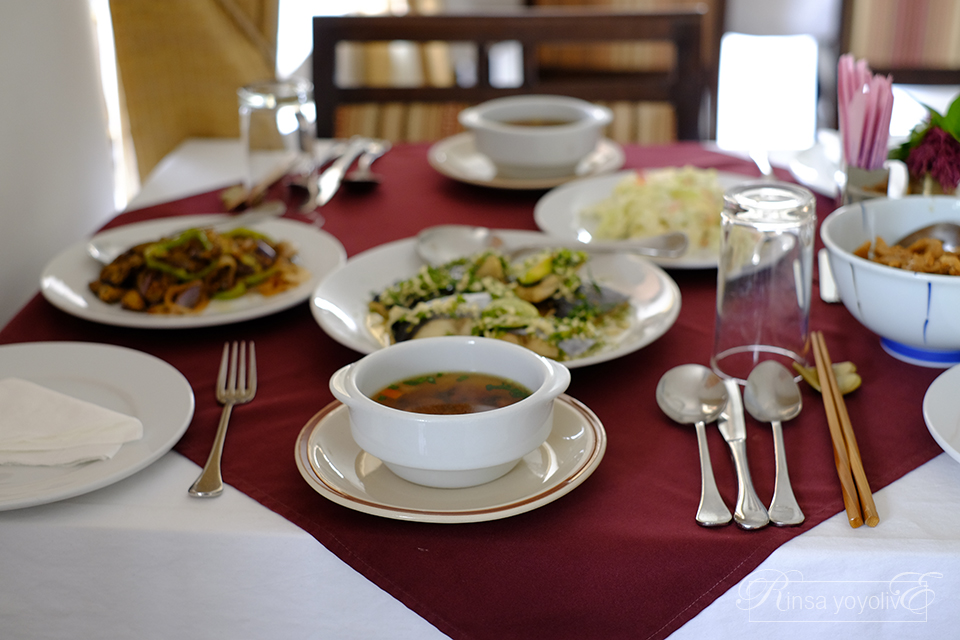

Let's eat together, it's delicious! We won't be going back skinny on this trip, haha.
We're moving on, and we've switched to a new car for the long drive. The minibus was getting worn out from running the air conditioning all the time.
Now that we've switched to a new car, we can enjoy the open air like this!
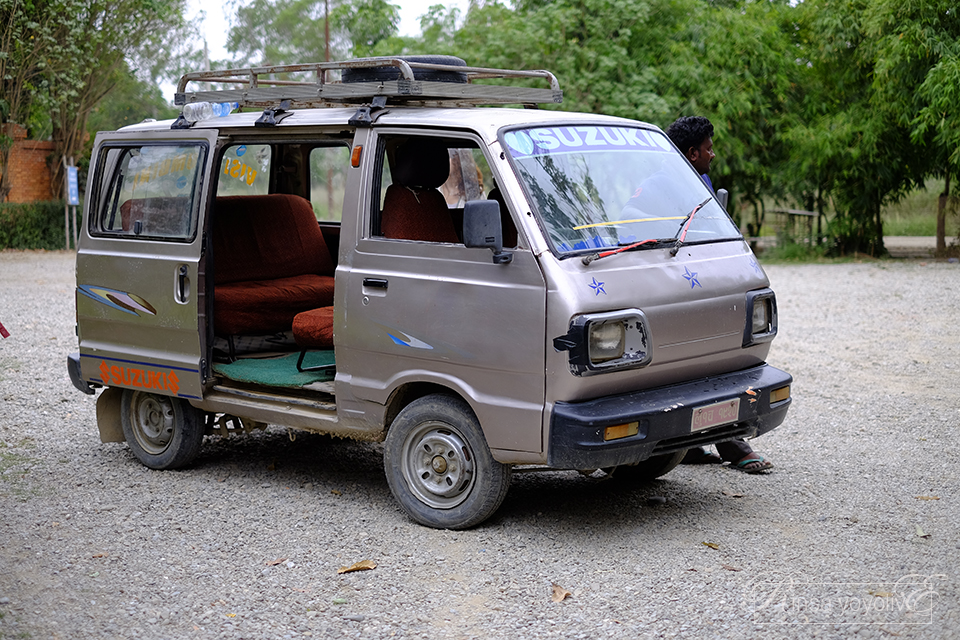
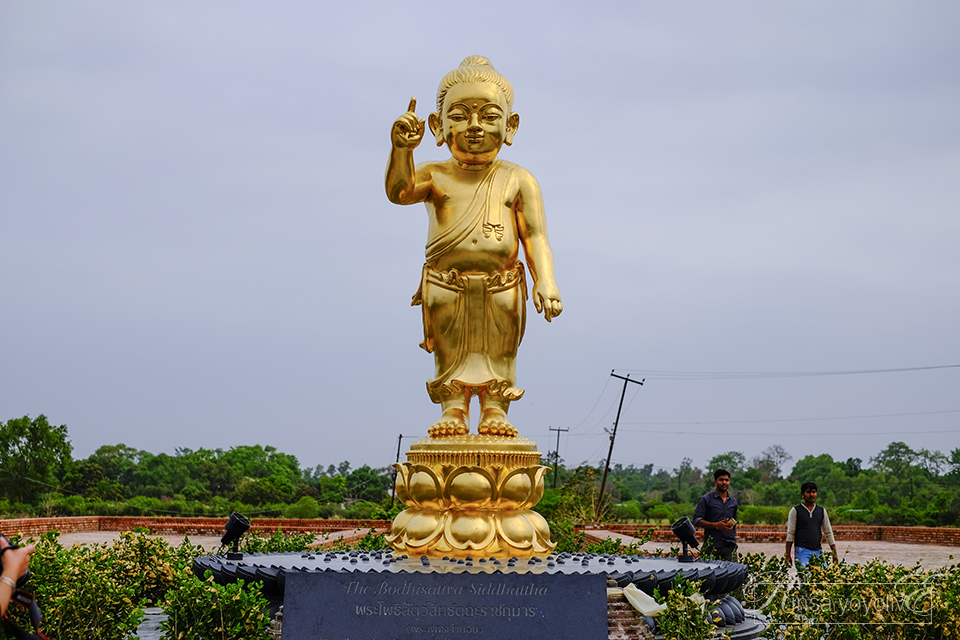
"The birthplace of the Buddha"
Lumbini, Nepal
Lumbini is located in Nepal, near the border with India, north of the city of Kapilavastu.
It is located between the cities of Kapilavastu and Devadaha. Lumbini covers an area of approximately 2,000 acres and is home to the "Mayadevi Temple", the birthplace of the Buddha. Inside the temple, there is a "statue of Queen Mayadevi" giving birth to Prince Siddhartha and a footprint of Prince Siddhartha. Outside, there is an "Ashoka pillar" inscribed with the words "This is the birthplace of Prince Siddhartha".
There is also a "sacred pond" behind the Mayadevi Temple.
The pillar in the picture below is the Ashoka pillar.
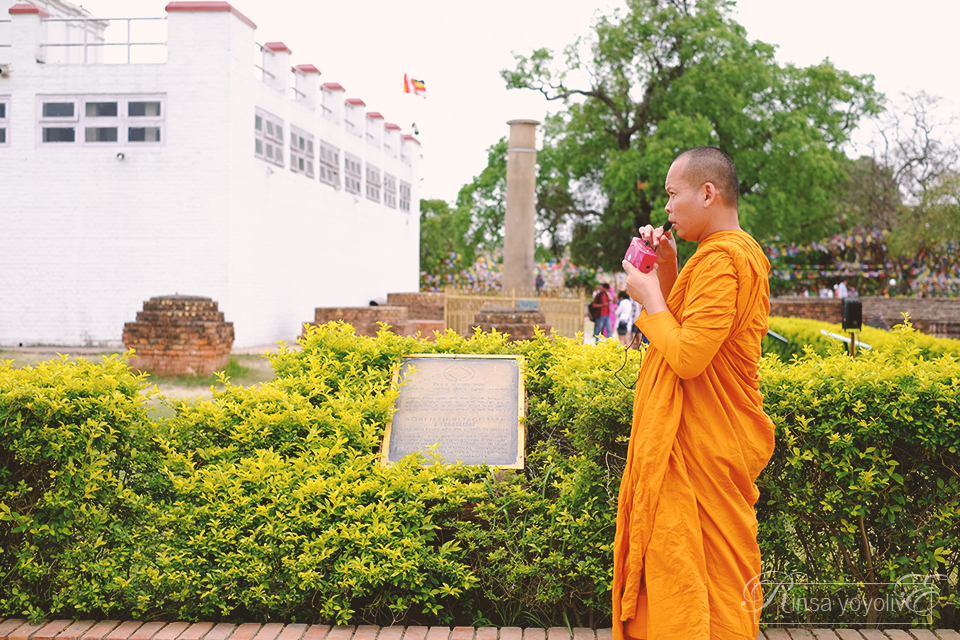
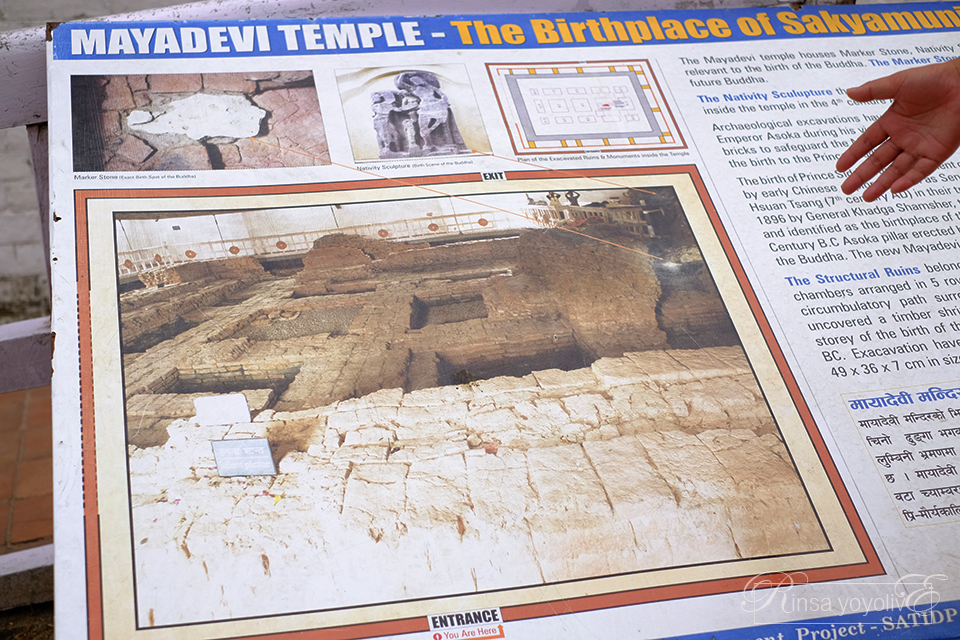
The Mayadevi Temple, a UNESCO World Heritage Site, has been covered with a roof by the Nepalese government to preserve its traces and space.
Photography is strictly prohibited, and security personnel closely monitor the area.
We entered the temple and saw the footprints under the lights, which are similar to the image on the sign.
A wooden walkway has been constructed to provide a clear view of the footprints. However, the area between the footprints is littered with a vast amount of coins and banknotes thrown by pilgrims, which is increasing day by day.
There is no prohibition, and even the footprints are not clearly visible due to the glass cover that has been placed to prevent the money and coins from damaging the historical evidence. We also threw a coin, but we chose to throw it into another slot, haha.
![]()
The Bokehrama Pool is located behind the Mayadevi Temple. Turtles can be seen popping their heads up from time to time to greet visitors.
Please walk barefoot from this point onwards.

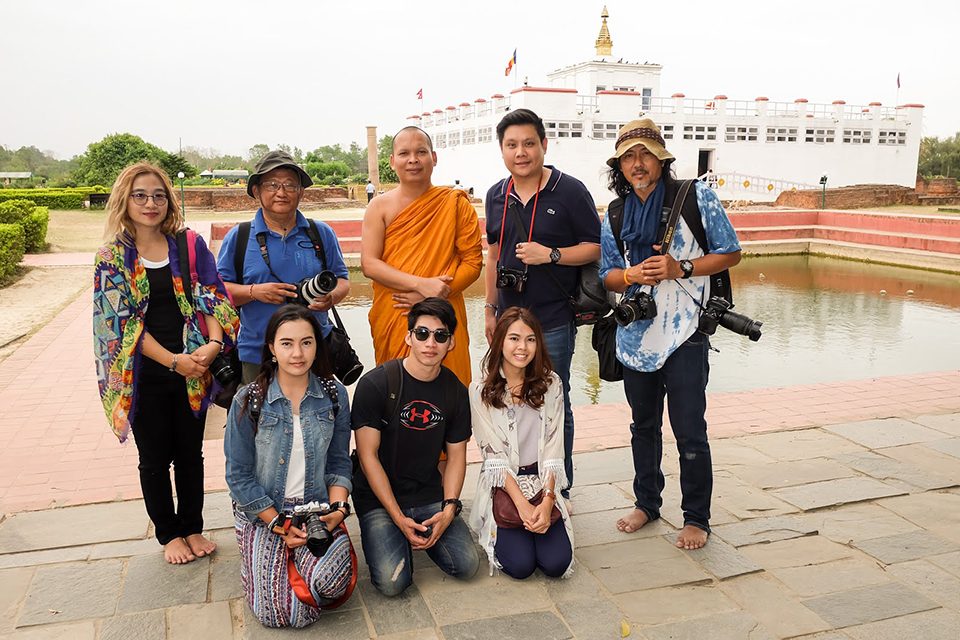
Let's take a commemorative photo with the group who joined the trip together.
Sponsored by Thai Smile Airways.
When visiting Nepal, don't miss the opportunity to capture the flags of faith and hope of the Nepalese people.
The colorful flags, with characters or images similar to prayer flags, are a familiar sight in Nepal. We have seen them in pictures online, and today we finally see them in person.
These vibrant flags hold a deeper meaning than just their beauty as they flutter in the wind.
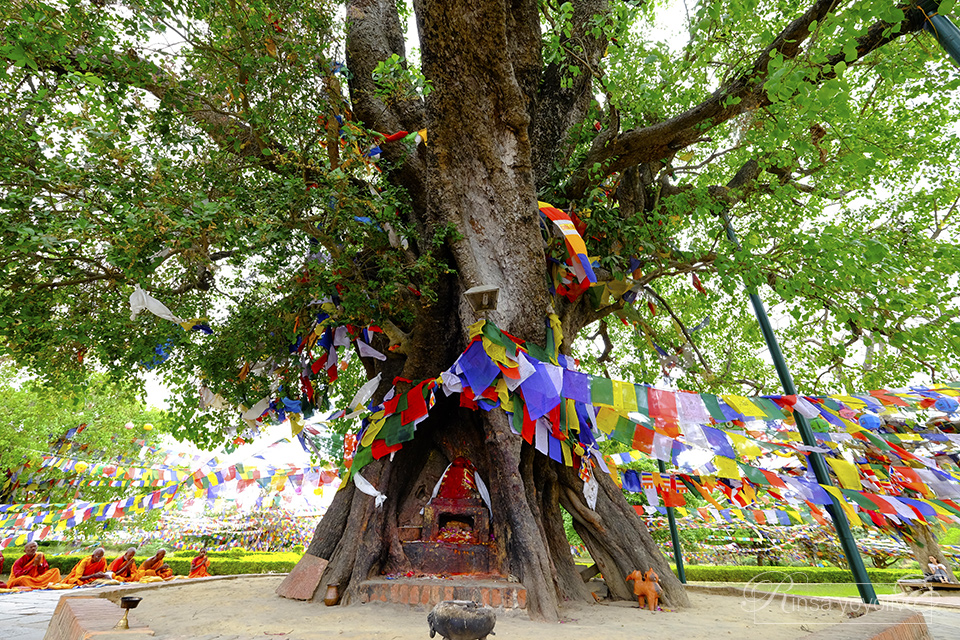
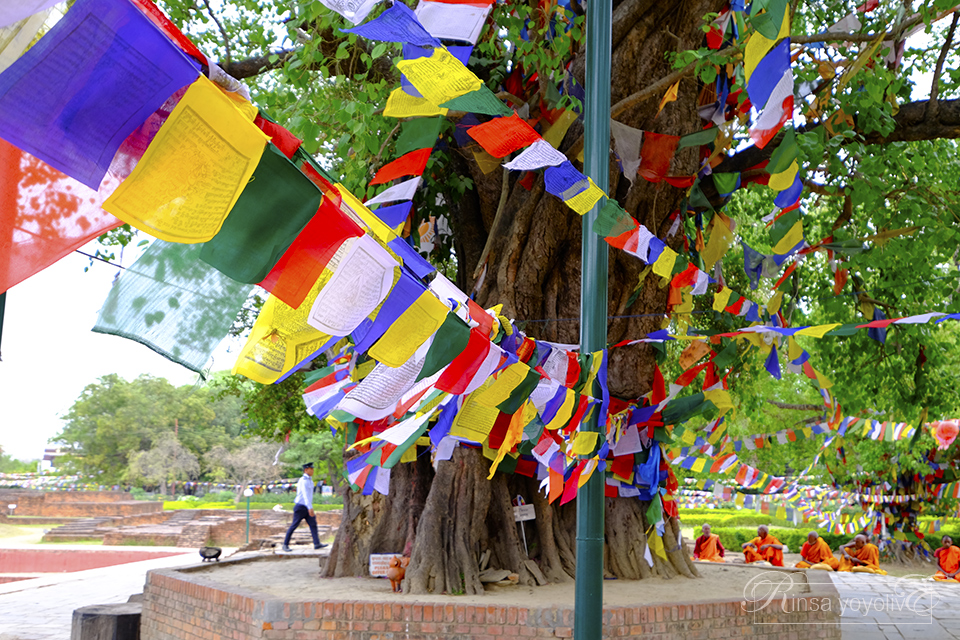
Amen.
Before returning to the hotel in Lumbini, the monks took us to visit another beautiful Thai temple.
The name of the temple is Thai Lumbini-Nepal Temple.
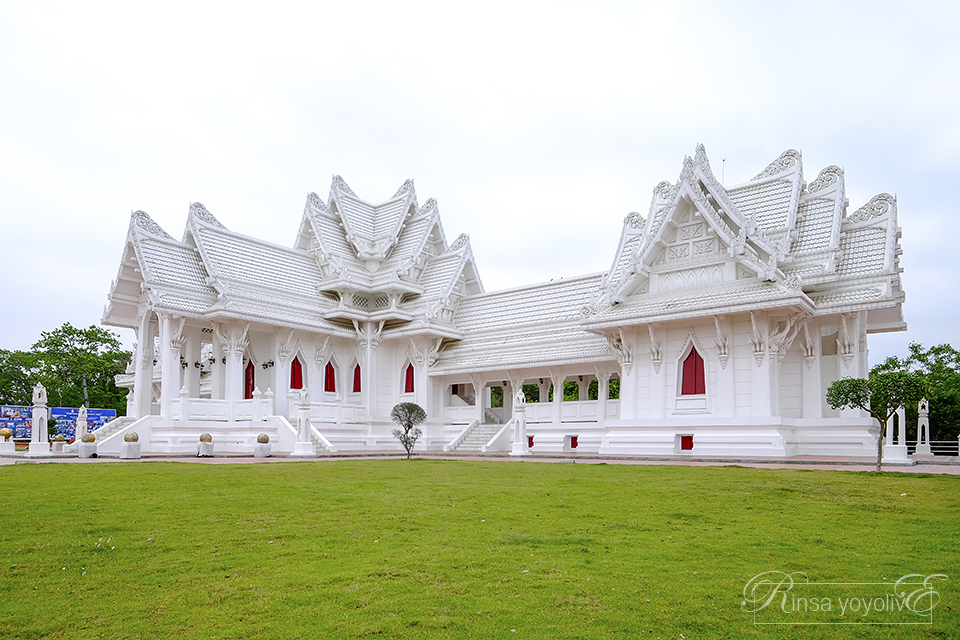
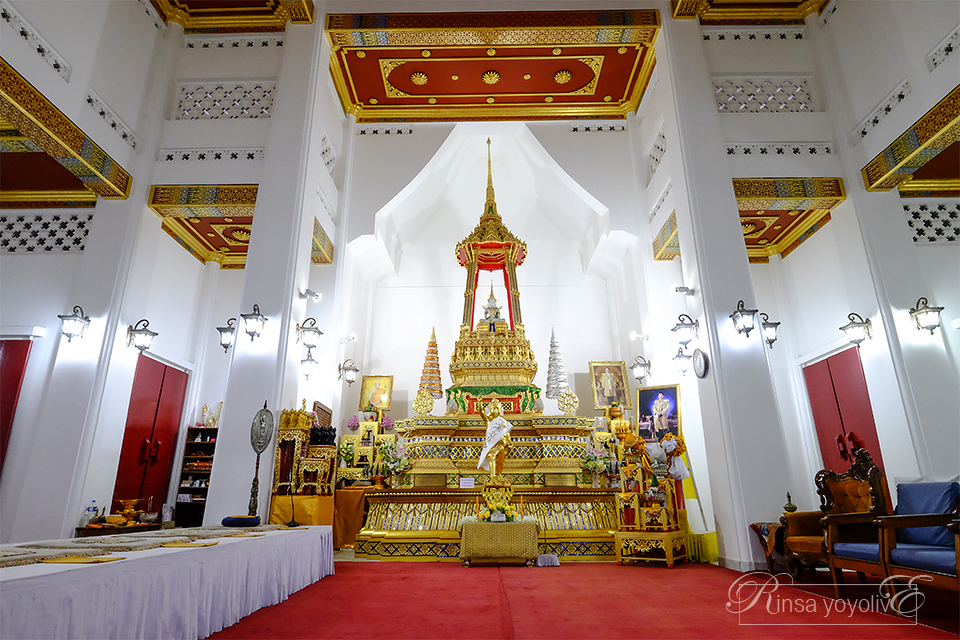
The Power of Thai Faith: Building Beautiful Temples Abroad
The unwavering faith of Thai people has once again manifested in the construction of stunning temples in foreign lands. Even in the city of Lumbini, the birthplace of Buddha, numerous Thai inscriptions adorn significant Buddhist structures.
As seen in the image below, a local temple caretaker informed us that the magnificent blue-roofed vihara serves as a reception hall for Thai delegations or royalty who visit during important festivals.
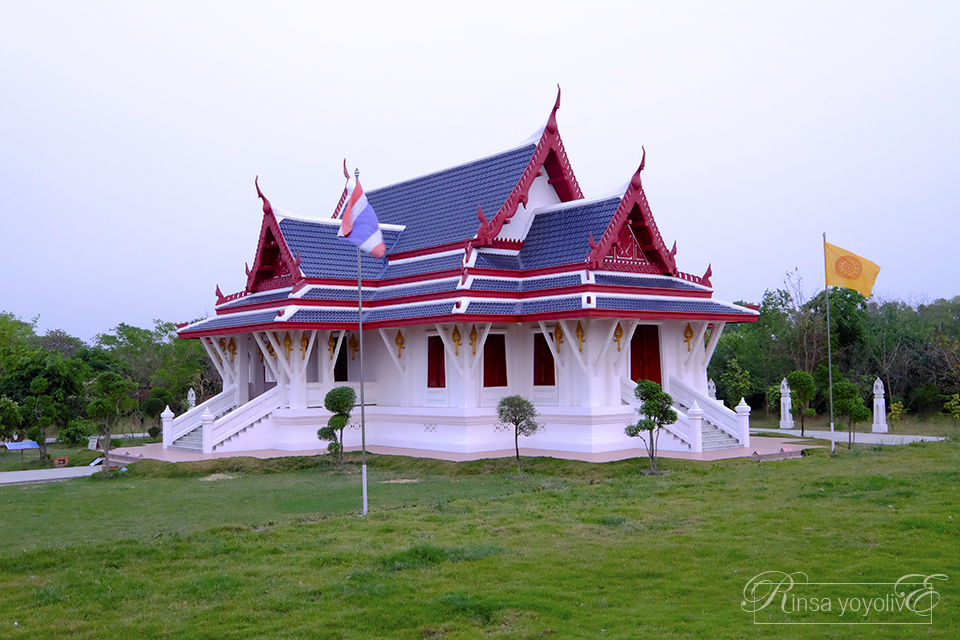
The sentence is empty.
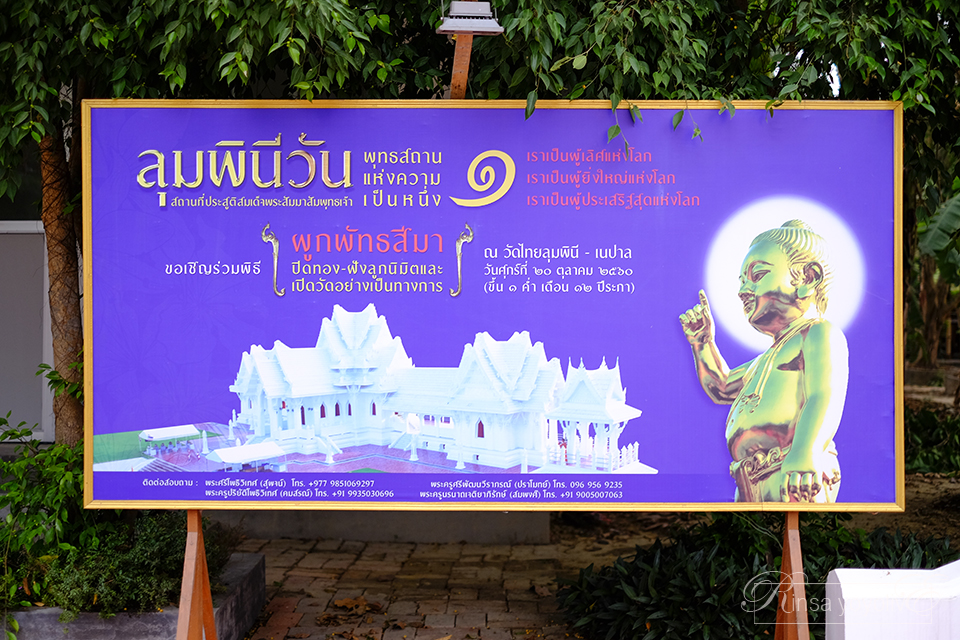
For example, on October 20, 2017, there will be a ceremony to tie the simas, with Phra Thep coming from Thailand to participate in the ceremony.
At this Thai Lum Phini-Nepal Temple.
![]()
Day 3: Pilgrimage to the Sacred Sites of Kushinagar, Nepal
Kushinagar is considered the fourth most important Buddhist pilgrimage site among the four holy sites.
This morning, we checked out of the hotel early and received boxed lunches from the hotel to eat in the car, but we didn't eat them.
Because the Venerable Master brought us to eat rice porridge at Wat Thai Navaratcharatnaram 960 again.
Before coming to the "Reclining Buddha" at the Parinirvana Temple.
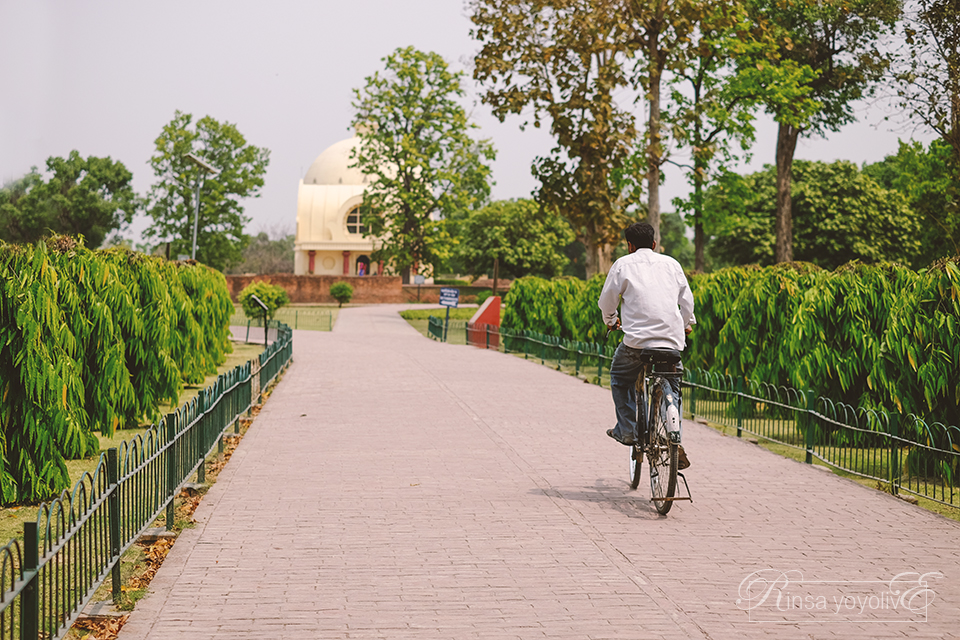
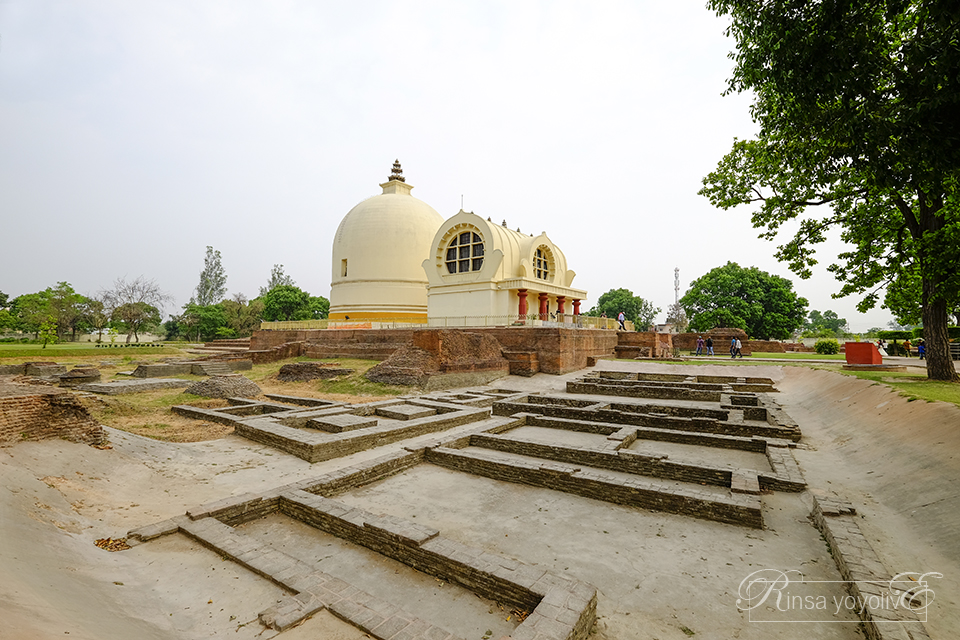
"Kusinara" is the location of "Salavana Grove", the sala forest where the Buddha attained Parinirvana.
Today, "Kusinara" has an important memorial site, the "Great Stupa", built by Emperor Ashoka to enshrine the Buddha's relics.
The Parinirvana Temple houses a reclining Buddha statue, surrounded by numerous ruins of ancient religious structures.
We looked up at the sala trees planted around the Salavana Grove, pointed out by the Indian shoekeeper.
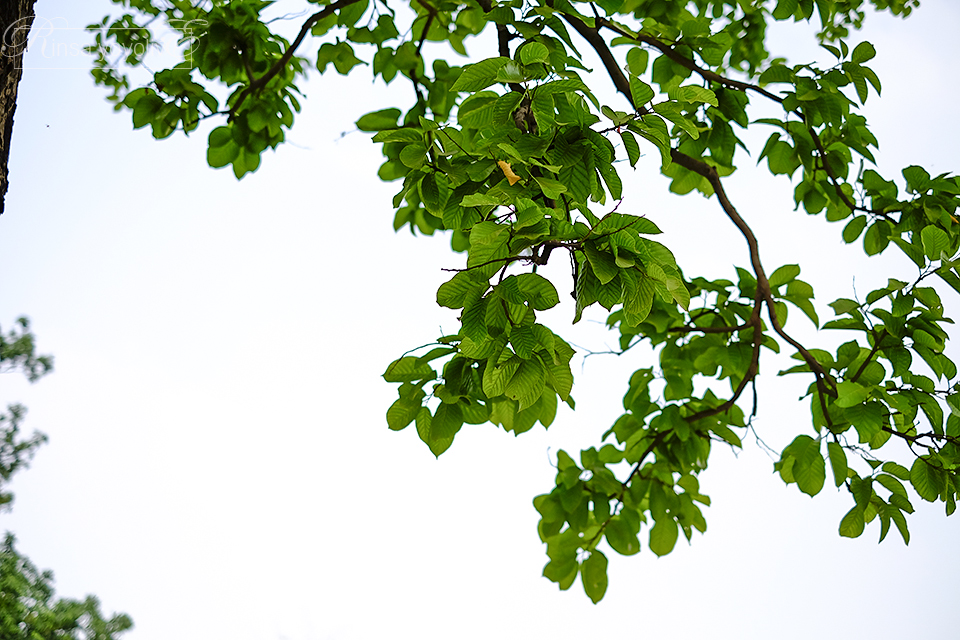
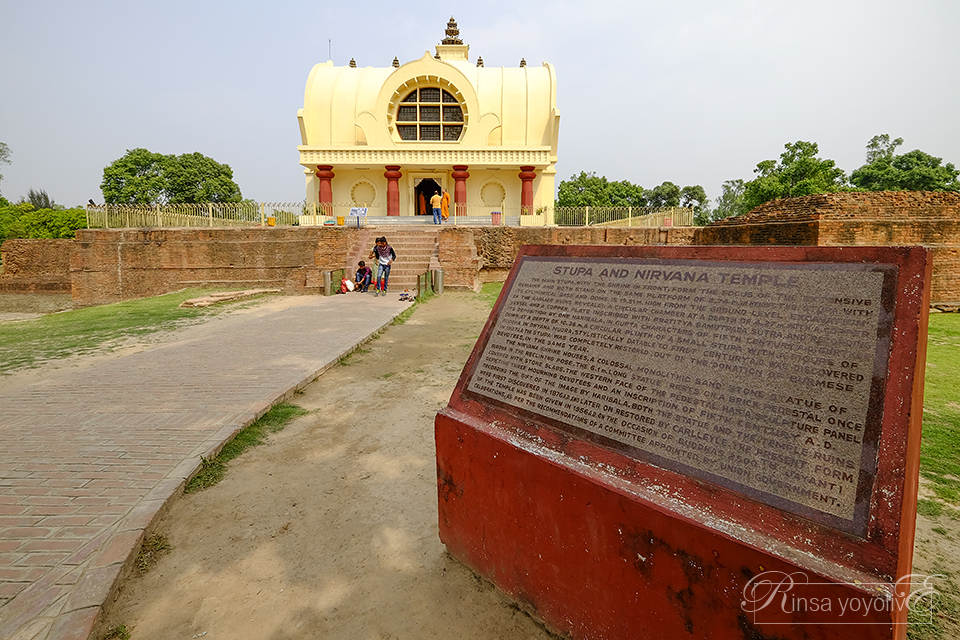
Before entering the Salavana Grove, the place where the Buddha attained Parinirvana, to remove our shoes,
We sat here in meditation with the Venerable and the congregation.
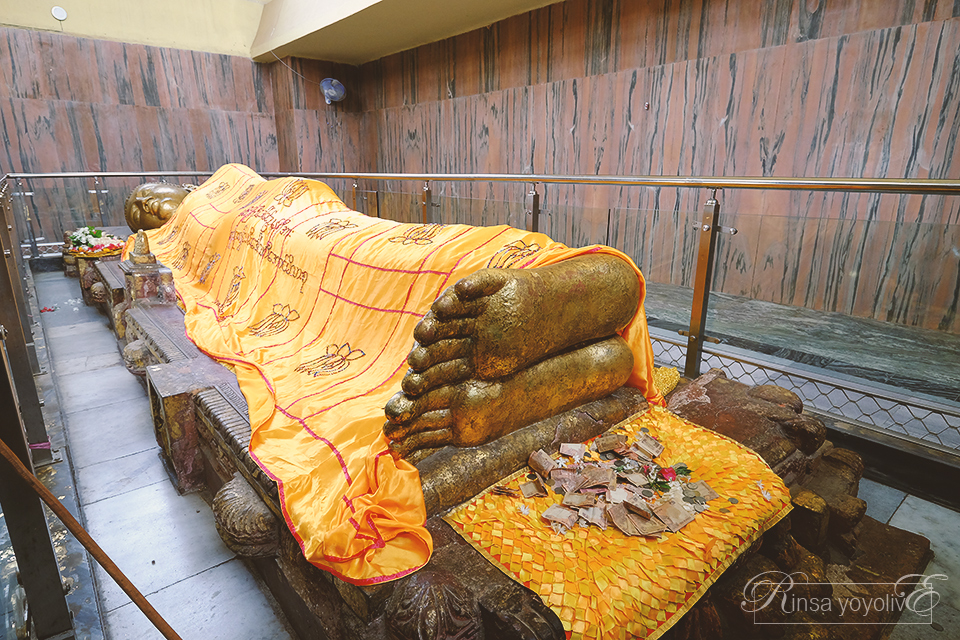

The Buddha statue in the Parinirvana posture is a work of art from the Gupta period (823-1093 AD) by the Mathura artisans.
It is approximately 7 meters long and 1 meter high, and is placed on a sandstone platform made of red sandstone from Chunar.
The face of the Buddha statue is still radiant, in the posture of extinguishing the aggregates of Parinirvana.
As we were walking out, an Indian man told us to walk around the stupa three times with our hands together. So we did.
But just as we finished the third round, the master finished his meditation and came out and told us to walk around the Buddha. Well, we did it! 555
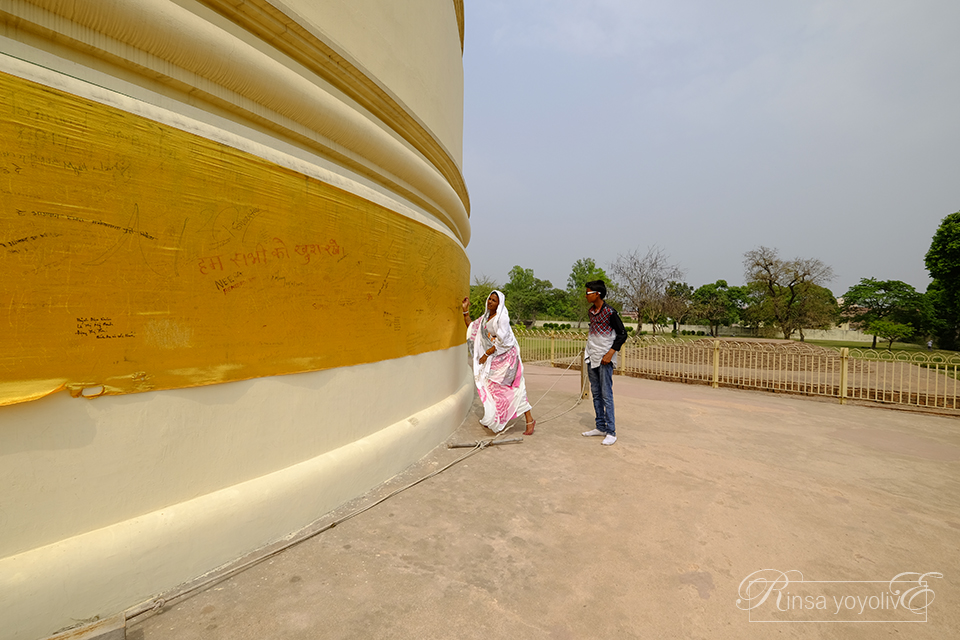
Despite the prohibition, some tourists secretly carved their names on the cloth covering the pagoda while walking around it three times.
Despite the barriers erected by the nearby officials, they still managed to cross the boundary and carve their names, including large, prominent names in Thai.
They even signed their names in Thai with "Bangkok," as if they were afraid people wouldn't know where they were from.
After leaving Salwan Garden, there were a few shops selling goods from Indian vendors outside. I took some pictures to show you the atmosphere.
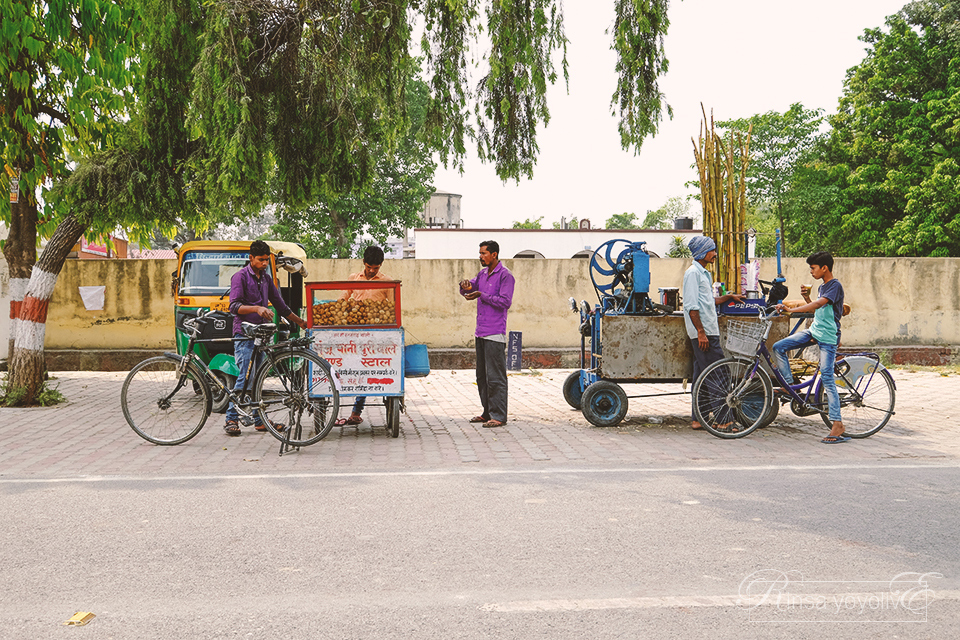
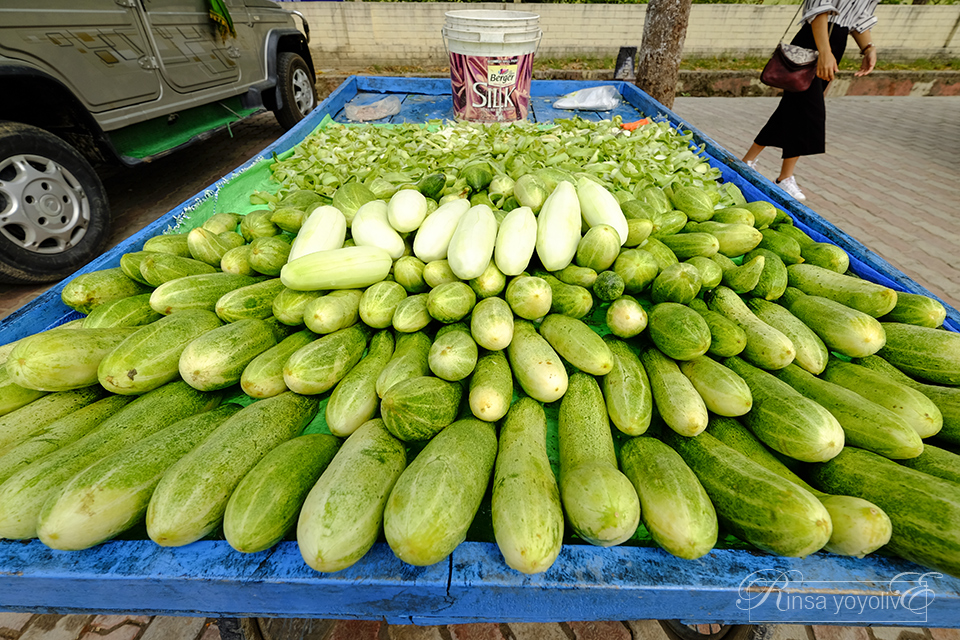
The cucumbers in this area are said to be very popular, with large, fresh, and delicious fruits. It is tempting to buy some to eat later.
However, I can only look at and admire the Indian fruits.
Just one kilometer from Salwan Garden, the teacher took me to the "Makutabandhana Chedi," the site of the Buddha's cremation ceremony.
The "Makutabandhana Chedi" is the site where the Buddha's body was cremated. It was originally a pyre of sandalwood.
After the cremation, a stupa was built over it.
Later, it was excavated and found to be the remains of a large brick stupa, as seen today.
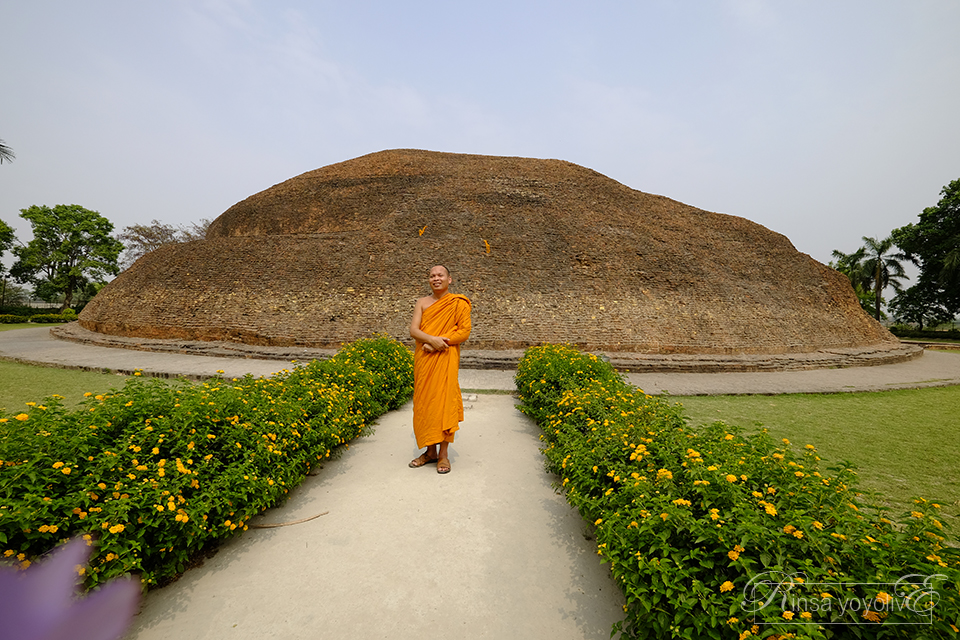
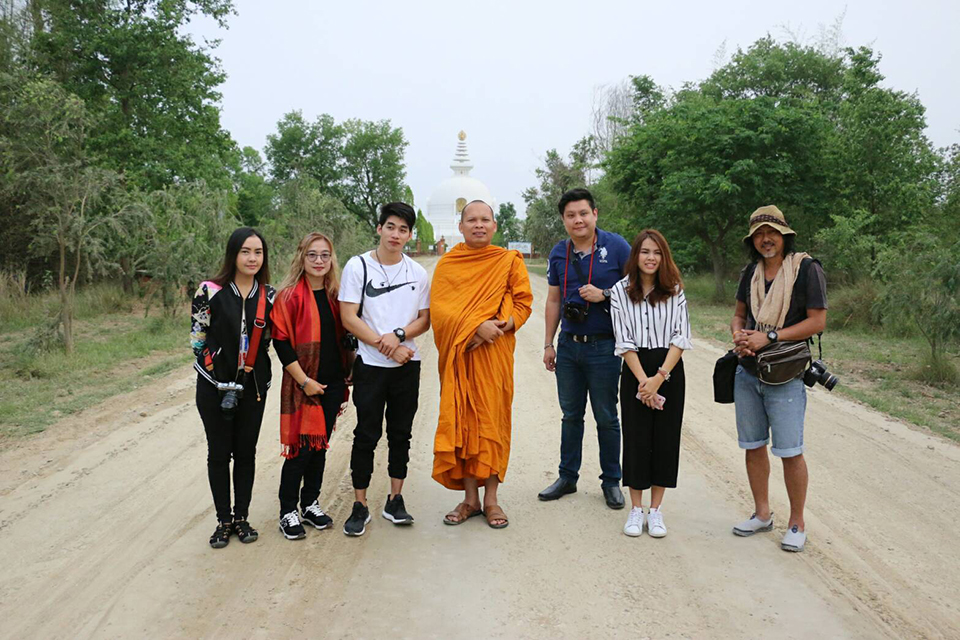
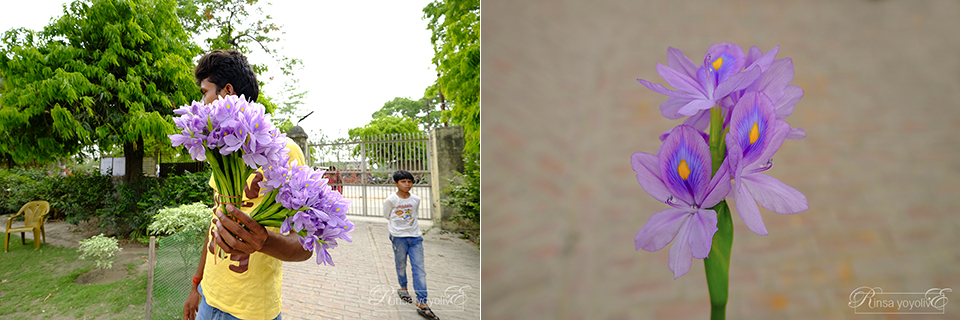
An unknown flower from an Indian flower seller.
After much persuasion to buy the whole bouquet for 100 rupees, we refused but received a small souvenir flower. As soon as we held it in the car, it immediately wilted!
It was a hot day at that time. The Venerable told us that there is one strange thing about India: when it is hot, the water gets colder.
For example, the tap water in this area. He then turned on the water to wash his hands for us to see. We tried it ourselves and it was indeed cold.
Normally, when the outside air is hot, the water from the hose used to water the plants is also warm, following the temperature of the air, right? But here, it was surprisingly cold!
![]()
In addition to the long drive to Lucknow, the venerable monk also took us to another beautiful place.
This is another Thai temple in Kushinagar, called Wat Thai Kushinagar Chalerm Raj.
We had delicious and refreshing shaved ice made by the nuns here.
Like other Thai temples in India, this beautiful temple has accommodation, a canteen, and a rice and water mill.
To support Thai pilgrims.
Below is the beautifully decorated reliquary of the Lord Buddha. At this temple.
To pay homage for good luck in life.
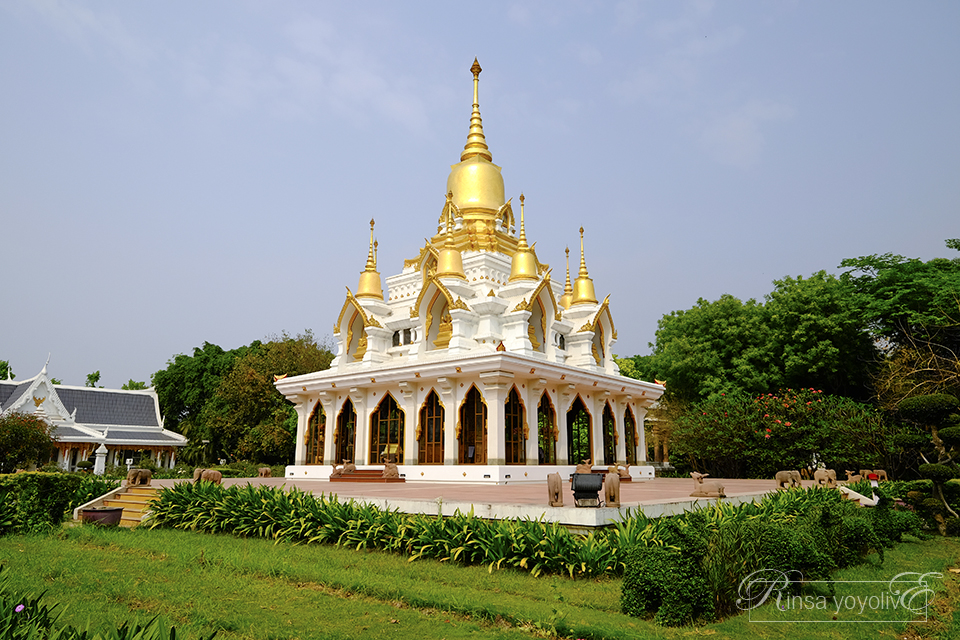
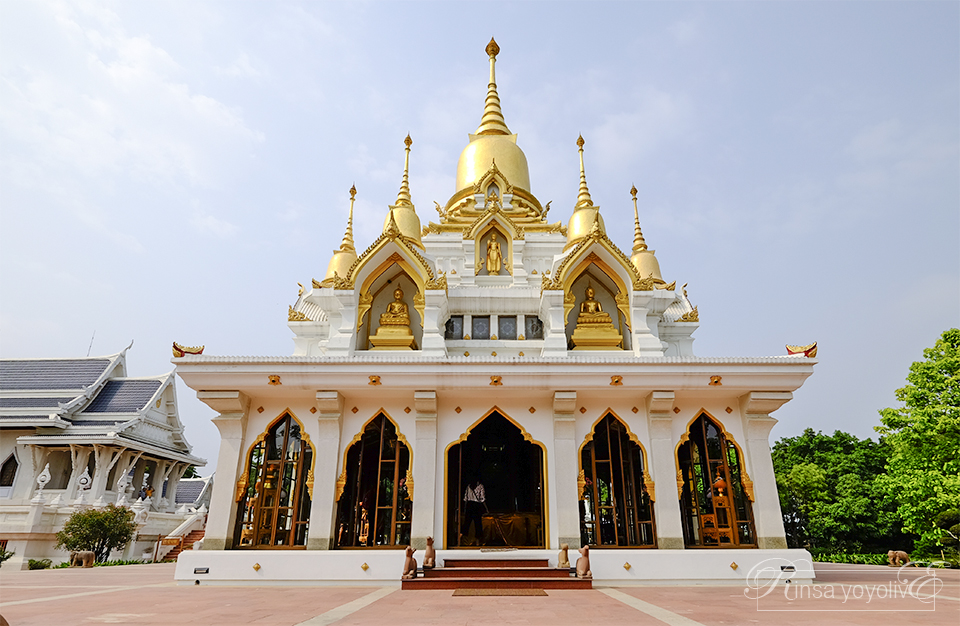
This review is about the pilgrimage sites in India and Nepal that we visited.
Seeing and experiencing these sites firsthand filled us with awe at the grandeur of the Buddha's birth.
The power and faith of the Thai people in Buddhism
With this once-in-a-lifetime opportunity to visit the birthplace of Buddhism
Thank you for watching.
RinSa YoyoLive
RinSa YoyoLive
Tuesday, October 8, 2024 10:26 AM

